savings glut
description: a situation in which desired saving exceeds desired investment, often leading to lower interest rates and economic stagnation.
80 results
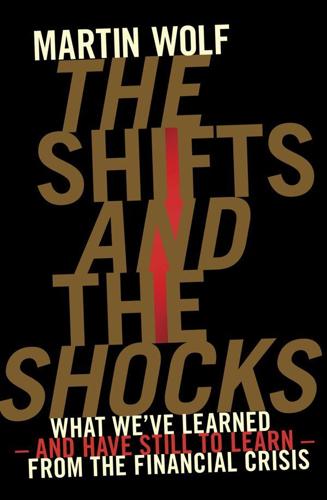
The Shifts and the Shocks: What We've Learned--And Have Still to Learn--From the Financial Crisis
by
Martin Wolf
Published 24 Nov 2015
These higher prices greatly increased the surplus savings of oil exporters, at least in the medium term. The third and most important reason for the emerging savings glut was the reaction of emerging countries to the financial crises of the 1990s. In particular, they engineered surplus savings, as we saw in Chapter Three, to reduce their vulnerability to what they had learned to view (rightly) as destabilizing private-capital inflows, above all, debt-creating flows. As a matter of definition, observed savings must equal observed investment. So how does one identify a savings glut? Indeed, why should one call it a savings glut, rather than an ‘investment dearth’? The answer to the second question is that one cannot.
…
Also highly critical, in post-crisis writing, has been John Taylor of Stanford University, inventor of the eponymous ‘Taylor Rule’, which states that central banks should determine interest rates in response to divergences of actual inflation from target inflation and of actual GDP from full-capacity (or potential) GDP.45 Claudio Borio has argued more recently that the crisis is the consequence of excessive expansion in credit due to mistaken monetary policies.46 Justin Lin argues, on similar lines, that US monetary irresponsibility explains what has happened.47 The arguments can be put into two groups. The first contains arguments that no savings glut existed and that the global imbalances were solely the consequence of mistaken monetary policies in the high-income countries, above all the US. The second contains arguments that monetary policy was too loose, whether or not there was such a savings glut: Mr Bernanke may have had the right analysis, but the Fed’s was the wrong response, made worse by the failure to regulate the financial system. On the question of whether a savings glut existed (indeed still exists), the answer has to be that it did: it can be seen in post-1997 real interest rates and in huge and growing net exports of savings from a range of surplus countries.
…
Underneath it were global economic events, notably the emergence of a ‘global savings glut’ and the associated credit bubble, partly due to a number of interlinked economic shifts. A crucial aspect of this was the rise of the global imbalances, with emerging economies deciding to export capital to advanced countries that the latter proved unable to use effectively. After the Asian crisis, global real interest rates fell to exceptionally low levels. This triggered an asset-price boom that then turned into a bubble. But also important in forming the savings glut was the changing distribution of income between capital and labour and among workers.
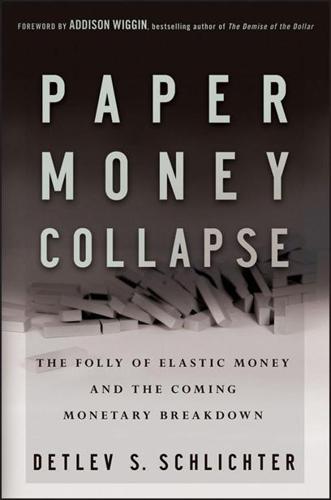
Paper Money Collapse: The Folly of Elastic Money and the Coming Monetary Breakdown
by
Detlev S. Schlichter
Published 21 Sep 2011
At this point one would have again arrived at a monetary cycle theory. If the savings glut theory describes the result of voluntary savings then it cannot explain the crisis. If one wants to build a crisis theory on what the savings glut theory describes, one would have no choice but to use the monetary crisis theory again, rendering the savings glut theory superfluous in the first place. Inflationism and International Policy Coordination Indeed, international capital flows and the phenomena described by Bernanke’s version of the savings glut theory can be integrated with the monetary crisis theory quite straightforwardly.
…
It seems worthwhile to briefly analyze this alternative narrative for two reasons: First, it will be shown that the extent of savings can never provide a satisfactory explanation for why an economic crisis occurs. Second, an analysis of the “savings glut theory” provides a good illustration of international aspects of the current monetary infrastructure. In particular, it can show how domestic inflationism can be substantially extended via a de facto international coordination of monetary policy. The Savings Glut Theory and the Myth of Underconsumption The notion that recessions occur because people save too much and consume too little has a very long history. It has intuitive appeal to the broader public, who perceive the recession in the form of a drop in the quantity of goods and services sold and the accumulation of excess inventories.
…
What is relevant to our purposes, however, is that the savings glut theory later, after the financial crisis had started, provided many commentators with a narrative of how the imbalances could have developed that played a role in destabilizing the economy and making a recession inevitable, such as persistent overly generous lending conditions in the United States, a low savings rate, and the concurrence of high levels of consumption with high levels of investment (mainly in residential real estate). According to this interpretation of the savings glut theory, these phenomena could have resulted from excess savings abroad rather than from domestic monetary arrangements and domestic monetary policy in the United States.
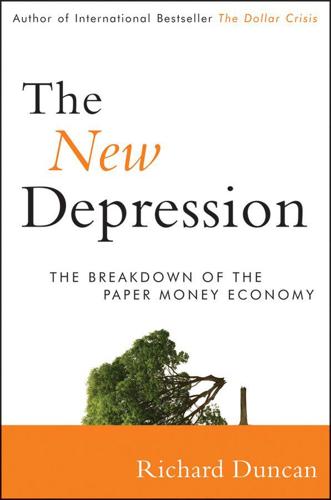
The New Depression: The Breakdown of the Paper Money Economy
by
Richard Duncan
Published 2 Apr 2012
To the extent that the dollars were invested in equities, they pushed up stock prices and created a wealth effect that permitted more consumption to occur than would have been possible otherwise. In short, those dollars distorted the U.S. economy by funding bad investments and excessive consumption, thus increasing its vulnerability to the downturn that got underway in late 2007. Debunking the Global Savings Glut Theory It is necessary here to set aside a few pages to discredit Ben Bernanke’s global savings glut theory, which attributes the flood of foreign capital into the United States to the propensity of certain countries to “save” too much. Traditionally, trade imbalances were understood to be caused by differences in national levels of saving and investment.
…
See also Quantitative easing commercial bank reserves (1945–2007) end of gold standard, creation of fiat money, and expansion of credit policy actions regarding New Depression Federal Reserve Act of 1913 Fiat money: end of gold standard and creation of government deficit in 2013 and 2014 and Fiat Money Inflation in France (White) Financial sector: debt and lack of liquidity reserve requirements and credit expansion Fiscal stimulus, needed with additional quantitative easing Fisher, Irving theory of debt-deflation Fixed-interest-rate debt, in diversified portfolio Flow of Funds Accounts of the United States Food prices: deflation and excluded from CPI quantitative easing and Foreign causes, of credit expansion Bernanke’s global savings glut theory and central banks’ creation of fiat money and foreign exchange reserves possibility of end to China’s buying of U.S. debt Foreign exchange reserves. See Balance of payments Fortune magazine Fractional reserve banking, money creation through Freddie Mac: conservatorship of credit creation and decline in liquidity reserves quantitative easing and U.S. debt guarantees and Friedman, Milton General equilibrium, theory of Germany Glass–Steagall Act Globalization Global savings glut theory, of Bernanke Goldman Sachs Gold reserve requirement, end of and creation of fiat money Government Accountability Office report Government sector: inflation and deflation’s effects on percentage of total credit market debt rational investment option for results of spending cuts in Government-sponsored entities (GSEs): credit supply and GSE-backed mortgage pools inflation and deflation’s effects on quantitative easing and U.S. debt guarantees and Great Depression economic conditions during Friedman’s conclusions about Greece Greenspan, Alan Gross domestic product (GDP): change in value added, by industry debt as percentage of driven by credit equation of exchange and during Great Depression ratio of credit growth to GSE-backed mortgage pools History of Economic Analysis (Schumpeter) Hoover, Herbert Household sector: debt and inflation and deflation’s effects on Human Action (von Mises) Hyperinflation Inflation and deflation credit and inflation derivative regulation and effects on asset classes Fisher’s theory of debt-deflation inflation in 2011 inflation likely in 2012 inflation likely without additional quantitative easing and fiscal stimulus New Great Depression scenarios and protectionism and wealth preservation during Innovation, in Mitchell’s theory of business cycles Interest rates, in U.S.: bond sales and cut by Federal Reserve to encourage credit expansion money supply and quantitative easing and trade balances and International Monetary Fund Ireland Jackson, Andrew Japan Johnson, Lyndon JP Morgan JPMorgan Chase Keynes, John Maynard Korea Labor market, changes in marginal cost of wages in.
…
Contents Preface Chapter 1: How Credit Slipped Its Leash Opening Pandora’s Box Constraints on the Fed and on Paper Money Creation Fractional Reserve Banking Run Amok Fractional Reserve Banking Commercial Banks The Broader Credit Market: Too Many Lenders, Not Enough Reserves Credit without Reserves The Flow of Funds The Rest of the World Notes Chapter 2: The Global Money Glut The Financial Account How It Works What Percentage of Total Foreign Exchange Reserves Are Dollars? What to Do with So Many Dollars? What about the Remaining $2.8 Trillion? Debunking the Global Savings Glut Theory Will China Dump Its Dollars? Notes Chapter 3: Creditopia Who Borrowed the Money? Impact on the Economy Net Worth Profits Tax Revenue Different, Not Just More Impact on Capital Conclusion Note Chapter 4: The Quantity Theory of Credit The Quantity Theory of Money The Rise and Fall of Monetarism The Quantity Theory of Credit Credit and Inflation Conclusion Notes Chapter 5: The Policy Response: Perpetuating the Boom The Credit Cycle How Have They Done so Far?

The Price of Time: The Real Story of Interest
by
Edward Chancellor
Published 15 Aug 2022
This conclusion has been reached using both econometric models and purely statistical analyses that make no use of economic theory. fn6 Bernanke admitted that the decline in long-term US interest rates had improved mortgage affordability, thereby boosting house prices, but ascribed the fall in Treasury yields to a ‘global savings glut’ rather than the Federal Reserve’s actions. There are alternative explanations for the decline in long-term US rates (discussed in a later chapter).fn7 Nevertheless, the savings glut hypothesis absolved monetary policymakers from blame for the subprime debacle and became a key part of mainstream explanations for the global financial crisis. Yet Bernanke’s analysis ignores the fact that the riskiest subprime loans were priced off short-term rates, including the option of adjustable-rate mortgages with their negative amortization feature (in which interest was rolled up with the principal).
…
Not in Your Life’, in Secular Stagnation, Facts, Causes and Cures, eds. C. Teulings and R. Baldwin (London, 2014). 20. William Bernstein, ‘The Paradox of Wealth’, Financial Analysts Journal, 69 (5), September/October 2013. 21. Ben Bernanke, ‘The Global Savings Glut and the U.S. Current Account Deficit’, speech at the Sandbridge Lecture, Virginia Association of Economists, 10 March 2005. The question of the ‘global savings glut’ is considered in chs. 17 and 18. 22. John B. Taylor, ‘The Financial Crisis and the Policy Responses: An Empirical Analysis of What Went Wrong’, NBER Working Paper, January 2009. Barry Eichengreen also observes that global saving held stable for the first 15 years of the new millennium, at 23–24 per cent of GDP. 23.
…
D., 163–4 Röpke, Wilhelm, 97, 100, 299 Rothbard, Murray, 30 Rothermere, Lord, 93 Roubini, Nouriel, 207, 254 Rousseff, Dilma, 258 Rucellai, Giovanni, 21 Rueff, Jacques, 85, 91, 115‡, 251 Ruskin, John, 180–81 Sainsbury’s (British grocery chain), 160 Saint-Simon, Louis de Rouvroy, Duke of, 50–51, 52, 57 Samuelson, Paul, 246–7 Sarkozy, Nicolas, 292 Savills (property consultants), 174 saving: bonus of compound interest, 190; China’s savings glut, 268–9; as deferred gratification, 29, 188–90; and interest, xxiv, 44, 77, 188–93, 194–9, 205–6; interest as ‘wages of abstinence’, xxiv, xxv, 188–91; savings glut hypothesis, 115–16, 117, 126, 128–9, 132, 191, 252; Terborgh on, 125* savings & loan crisis, US, 111, 145 Say, Jean-Baptiste, 99 Sbrancia, Maria Belen, 290 Scandinavian banking crisis (early 1990s), 136 Schacht, Hjalmar, 82, 92, 312 Schäuble, Wolfgang, 299 Scheidel, Walter, 204 Schumpeter, Joseph, 16, 32, 46, 95, 218; Capitalism, Socialism and Democracy (1942), 126, 140, 296–7; ‘creative destruction’ idea, xx, 140–43, 153, 296–7; on deflation, 100; History of Economic Analysis, xviii; view of intellectuals, 297 Schwartz, Anna, 98, 99, 105, 116 Schwarzman, Steven, 207 Sears (department store), 169–70 secular stagnation, 77, 124–8, 131, 132–9, 151, 205–6 Sée, Henri Eugene, Modern Capitalism (1928), 28* Seneca the Younger, 20–21 Senior, Nassau, 188, 191 Senn, Martin, 193 shadow banks: in Canada, 174–5; in China, 266, 270, 282*, 283–5, 286; collapse in subprime crisis, 221, 283; illiquid products, 226–7; re-emergence after 2008 crisis, 221, 227, 231, 233; structured finance products, 116, 227, 283–5; Trust companies as precursors of, 84*; types of, 221; ‘Ultra-short’ bond exchange-traded funds (ETFs), 227 Shaftesbury, Anthony Ashley Cooper, Earl of, 27 ‘shareholder value’ philosophy, 163–6, 167, 170–71 Shaw, Edward, 286 Shaw, Leslie, 83, 83* Shiba Inu (cryptocurrency), 308 Shin, Hyun Song, 254, 263 Shiyan, Hubei province, 275 Silicon Valley, 148, 151, 173, 176, 204 Silver, Morris, 7, 11 Singer, Paul, 185, 246 Smith, Adam, 14, 174; on monopolies, 162, 298; view of interest, 27, 27*, 31, 183; on wealth, 181; The Wealth of Nations (1776), xxii, 27–8, 27*, 31 Smithers, Andrew, Productivity and the Bonus Culture (2019), 152* Smoot–Hawley Act (1930), 261 socialism, 188, 297, 298 Soddy, Frederick, 181, 242 Solon the ‘Lawgiver’, 9, 18 Solow, Bob, 128 Somary, Felix, 94–5, 308 Sombart, Werner, Modern Capitalism, 22* Soros, George, 148*, 273, 283 South Africa, 258 South America: loans/securities from, 77, 79–80; precious metals from, 49, 168; speculation in bonds from, 64, 65–6, 91; trade during Napoleonic Wars, 70 South Korea, 267 South Sea Bubble (1720), 62, 65*, 68, 69, 307 Soviet Union, 278 Spain, 144–5, 147, 168, 213, 253, 279; mortgage bonds (cédulas), 117 Special Purpose Acquisition Companies (SPACs), 307 speculative manias, xxiii; Borio on, 135; and cryptocurrencies, 177–9; ‘hyperbolic discounting’ during, 176–7; in period from 1630s to 1840s, 64–6, 67–72, 73, 74, 75–6, 77–8, 79–80; technology companies in post-crisis years, 176–9; before Wall Street Crash (1929), 91 see also Mississippi bubble Spencer, Grant, 177 Sraffa, Piero, 42 St Ambrose, 18 St Augustine, 18–19, 202 St Bonaventure, 19 Stable Money League/Association, 87, 96 Standard Oil, 157 state capitalism, 280, 284, 292–5, 297, 298 Stefanel (Italian clothing company), 147 Stein, Jeremy, 231, 233 Steuart, Sir James, 53, 273 ‘sticky prices’ theory, 87* Strong, Benjamin, 82–3, 86–8, 90*, 92, 93, 98, 112 Stuckey’s Bank, 63, 66–7 subprime mortgage crisis, xxii, 114, 116, 117–18, 131, 211, 292; produces ‘dash for cash’, 227; unwinding of carry trades during, 221, 227 Suetonius, The Twelve Caesars, 12 Suez Canal, 78 Sumerian civilization, 4, 6, 8, 15 Summers, Larry, 124–5, 127, 129, 185, 230, 230*, 235, 302 Sumner, William Graham, ‘Forgotten Man’, xx, xxii, 198 Susa, Henry of, 25 Svensson, Lars, 247 Sweden, 174, 241, 242, 244, 245, 247, 294 Sweezy, Paul, 156 Swiss National Bank, 172–3, 293–4 Switzerland, 172, 174, 226, 233, 241, 244, 245 Sydney (Australia), 175 Sylla, Richard, 4, 11, 68, 109 Tacitus, 20–21 Tasker, Peter, 271 Tawney, R.H., 201 tax structures, 164; offshore tax havens, 210 Taylor, John, 116–17, 129, 252 Tencent, 283 Tencin, Claudine Alexandrine Guérin, Madame de, 51 Terborgh, George, 125–6, 127 Tesla, 176–7 Theranos, 149 Thiel, Peter, 263 Third Avenue (investment company), 227–8 Thornton, Daniel, 192 Thornton, Henry, 41–2, 66*, 70, 75 Thornton, Henry Sykes, 66* Tiberius, Roman Emperor, 12 time, concept of, xviii; and act of saving, 188–90; canonical ‘hours’, 21; and Lewis Carroll, 309; in era of ultra-low interest rates, 59, 177; Franklin on, xviii, 22, 28; and Hayek, 32; interest as ‘time value of money’, xxiv, xxv–xxvi, 10, 14–15, 16, 20, 22, 26–7, 28–32; Lord King’s ‘paradox of policy’, 194, 230*; the Marshmallow Test, 29, 189; and medieval scholars, 19–20; Renaissance writings on, 21; secularization of, 21–2; speculators’ misunderstanding of, 59; and thought in ancient world, 20–21; time as individual’s possession, 20, 21, 25; ‘time in production’, xxiv, 14–15, 16, 22, 95, 95†, 141; ‘time preference’ theory, xxiv*, 28–32, 42, 95, 188–9; Thomas Wilson’s ideas, 26–7, 28, 30 Time-Warner, 167 Tooke, Thomas, 69 Toporowski, Jan, 167 Torrens, Robert, 66 Toys ‘R’ Us, 169 trade and commerce: in ancient world, 6, 7–8, 12, 14, 15; Atlantic trade, 59; business partnerships (commenda, societas), 26; commercial classes/interests, 35, 36–7, 38–40, 41, 43, 44, 66–7; commercial importance of time, xviii, 15–16, 21, 22; emergence of modern trade cycle, 62–4; expansion of in Middle Ages, 19, 21–3, 25–6; international trade, 6, 15, 23, 24, 59, 252–3, 261–2; and Italian Renaissance, 21; in medieval Italy, 21–3; mercantile/shipping loans, 6, 12, 14, 22–3, 26, 219 TransAmerica Life Insurance, 199* Trichet, Jean-Claude, 239 Trollope, Anthony, The Way We Live Now, 73 Truman, Harry, 84 The Truman Show (Peter Weir film, 1998), 185–7 Trump, Donald, 185, 261, 262, 291–2, 299, 304, 310 trusts/monopolies: in early twentieth century Europe, 159; Lenin on, 159–60; merger ‘tsunami’ after 2008 crisis, 160–63, 161*, 168–70, 182–3, 237, 298; ‘platform companies’, 161; Adam Smith on, 162, 298; in US robber baron era, 156, 157–9, 203 tulip mania (1630s), 68 Tunisia, 255 Turgot, Anne-Robert Jacques, 15, 28–9, 30, 218 Turkey, xxiii, 252, 258–60, 263 Turkmenistan, 262 Turner, Adair, 292 TXU (energy company), 162 Uber, 149, 150 ‘unicorn’ start-up companies, 148–50, 153, 155, 173, 176–7 Union Pacific Railroad, 157, 158 United States: as bubble economy, 184–7; credit expansion of 1920s, 87–91, 92–4, 96–8, 112, 203; Democrats’ Green New Deal policy, 302; economic expansion (1929–41), 143; economy in Bretton Woods era, 291, 302; financial crisis (1873), 157; foreign securities/loans in 1920s, 91; inflation in 1970s, 108–9; Knickerbocker Panic (1907), 83–4; large-scale immigration into, 78; loan of farm animals in, 4; long-term interest rates (1945–2021), 134; loss of manufacturing jobs to China, 261*, 261; low economic vitality in post-crisis decade, 124, 150–53, 191; monetary policy in 1900s, 83–4, 83*; post-Second World War recovery, 126; public debt today, 291–2, 291*; recessions of early 1980s, 109–10, 151; reversal of global capital flows (late-1920s), 93; robber baron era, 156–9, 203; shift from manufacturing towards services, 167–8, 182; and zombification, 146, 152–3, 155 see also Federal Reserve, US United States Steel Corporation, 157–8 Universities Superannuation Scheme, UK, 196 Useless Ethereum Token, 178 usury: attacked from left and right, 17; attitudes to in ancient world, 17–18, 19, 20–21, 219; in Britain, 24, 26–7, 34, 40, 42, 65‡, 65; Church law forbids, 18–19, 23–4; definitions in Elizabethan era, 26–7; etymology of word, 5; Galiani on, 218–19, 220, 221; and Jews, 18; Marx on, 16, 200–201; medieval Church acknowledges risk, 25–6; Old Testament restrictions on, 17; Proudhon-Bastiat debate on, xvii–xix, xxi, xxii, xxv, 9; in Renaissance world, 22–3; scholastic attack on, 18–20, 23–4, 25 Valeant Pharmaceuticals, 161, 168–9 Vancouver, 175 Veblen, Thorstein, Theory of Business Enterprise (1904), 158, 159, 166 Velde, François, 58*, 59 Venice, 22, 23 Vinci, Leonardo da, Salvator Mundi, 208–9 VIX index, 228–9, 254 La Voix du Peuple, xvii–xix volatility, 153, 228–30, 233, 234, 254, 304, 305 Volcker, Paul, 108–9, 121, 145, 184, 240 Voltaire, 57 Wainwright, Oliver, 209 Waldman, Steve, 206 Waldorf Astoria, New York, 285–6 Wall Street Crash (October 1929): Fed’s response to, 98, 100, 101, 108; Fisher and Keynes fail to foresee, 94–5; Hayek’s interpretation of, 101, 105; low real rates in 1920s USA, 87–91, 89, 92–4, 96–8, 203; low/stable inflation at time of, 134; monetarist view of, 98–9, 101, 105, 108; predictions/warnings of, 93–5, 96, 101, 105, 308; reversal of international capital flows (late-1920s), 93, 93*, 261 WallStreetBets, 307, 309 Walpole, Horace, 62–3 Warburg, Paul, 94 Warsh, Kevin, 228 wealth: ‘Buddenbrooks effect’, 216; conspicuous consumption by mega-rich, 54–5, 208–10, 212; definitions of, 179–82, 216; elite displays as signs of inequality, 209–10, 212; virtual wealth bubbles, 179, 180, 181–2, 185, 193–5, 206, 215, 216–17, 217†, 229–30, 237; wealth illusion, 193–5, 198 Welch, Jack, 170, 171 Wells, H.

The Corona Crash: How the Pandemic Will Change Capitalism
by
Grace Blakeley
Published 14 Oct 2020
After years of generating supernormal profits in an otherwise depressed economic environment, many of these firms – alongside monopolies in more traditional industries – are sitting on huge piles of cash, much of which they are unable – or unwilling – to invest in innovation or production. The resultant ‘corporate savings glut’ poses a significant theoretical challenge to economists and is a source of concern for policymakers.18 In fact, the corporate savings glut is accelerating the financialisation of the average monopoly by inverting the usual relationship between financial institutions and corporations. Rather than simply enabling companies to access capital from sceptical investors, many financial institutions are now helping large firms invest their ‘savings’ in financial markets.
…
Sweezy, Monopoly Capital: An Essay on the American Economic and Social Order, New York: Monthly Review Press, 1966; John Bellamy Foster, ‘Monopoly-Finance Capital’, Monthly Review, vol. 58, no. 7, December 2006. 5 Ryan Banerjee and Boris Hofmann, ‘The rise of zombie firms: causes and consequences’, Bank for International Settlements Quarterly Review, September 2018. 6 Michalis Nikiforos, ‘When Two Minskyan Processes Meet a Large Shock: The Economic Implications of the Pandemic’, Levy Economics Institute, Policy Note 2020/1 (March 2020). 7 Martin Arnold and Brendan Greeley, ‘Central Banks Stimulus Is Distorting Financial Markets, BIS Finds’, Financial Times, 7 October 2019. 8 Jesse Colombo, ‘The US Is Experiencing a Dangerous Corporate Debt Bubble’, Forbes, 29 August 2018; Phillip Inman, ‘Corporate Debt Could Be the Next Sub-Prime Crisis, Warns Banking Body’, Guardian, 30 June 2019. 9 Matthew Watson, ‘Re-establishing What Went Wrong Before: The Greenspan Put as Macroeconomic Modellers’ New Normal’, Journal of Critical Globalisation Studies, no. 7 (2014): 80–101. 10 Alfie Stirling, Just about Managing Demand: Reforming the UK’s Macroeconomic Policy Framework, London: Institute for Public Policy Research [IPPR], 2018. 11 Marx, Capital, Vol. 1, p. 929. 12 Rana Foroohar, Don’t Be Evil: The Case Against Big Tech, New York: Currency/Random House, 2019. 13 See, e.g., Jonathan Taplin, Move Fast and Break Things: How Google, Facebook and Amazon Cornered Culture and Undermined Democracy, New York: Little, Brown, 2017, in which the author makes the now well-known claim that ‘Data is … the new oil’. 14 Foroohar, Don’t Be Evil; Martin Wolf, ‘Why Rigged Capitalism Is Damaging Liberal Democracy’, Financial Times, 18 September 2019. 15 Foroohar, Don’t Be Evil. 16 Matt Phillips, ‘Investors Bet Giant Companies Will Dominate After Crisis’, New York Times, 28 April 2020. 17 Matthew Vincent, ‘Loss-Making Tech Companies Are Floating Like It’s 1999’, Financial Times, 16 June 2019. 18 Martin Wolf, ‘Corporate Savings Are Contributing to the Savings Glut’, Financial Times, 17 November 2015; Peter Chen, Loukas Karabarbounis and Brent Neiman, ‘The Global Corporate Saving Glut: Long-Term Evidence’, VoxEU, CEPR Policy Portal, 5 April 2017. 19 Rana Forooha, ‘Tech Companies Are the New Investment Banks’, Financial Times, 11 February 2018. 20 Andres Diaz, ‘I’m a Small Business Owner. Where’s My Coronavirus Bailout?’

The Great Demographic Reversal: Ageing Societies, Waning Inequality, and an Inflation Revival
by
Charles Goodhart
and
Manoj Pradhan
Published 8 Aug 2020
Under the stewardship of the State Administration of Foreign Exchange, China’s official agency for managing reserves, hard currency reserves were invested almost entirely in the deep and liquid asset markets in the advanced economies. The bulk of that investment was in US Treasury securities. Global capital thus flowed ‘uphill’, from China (and most of North Asia) to the advanced economies, helping create what the Federal Reserve’s ex-Chair Ben Bernanke termed the ‘global savings glut’. The excess of desired savings over desired investment in the AEs was driving the equilibrium real interest rate lower by itself, since the dependency ratio improved in the 1980s. The injection of excess savings from China and North Asia served to push interest rates even lower. The US consumer, fabled for needing no encouragement to spend, got some help nevertheless.
…
However, switching from a deficit to a surplus when age-related expenditures are going to skyrocket will be extremely painful, and we think not politically feasible. Inflation then becomes a way that macroeconomic balance is restored. 5.2.1 The Household Sector Surplus Is Set to Erode Ben Bernanke (2005) famously attributed the declining real rate of interest from the 1990s onwards to a ‘savings glut’. This was down to two drivers: first, baby boomers saving for their future retirement and, second, by the ageing, but increasingly prosperous workers in Asia (especially in China) saving for their old age due to an inadequate social safety net. The result was that household savings ratios were high.
…
One of the reasons for the declining trend in interest rates up till now has been that this longer-term prospect has made Ministers of Finance unwilling to allow deficits to rise sufficiently to balance the economy at a time when the world’s savings ratio, notably in China, exceeded ex ante investment, Ben Bernanke’s ‘savings glut’. By the same token, we think it highly likely that the fiscal position will not move sufficiently strongly into surplus to offset the larger deficits that we expect to see within the private sector. Because fiscal deficits were not sufficient to equilibrate the economy over the last 30 years, central banks were forced to do so by lowering interest rates, ‘the only game in town’.2 In the same way in future, we expect real interest rates to have to rise in order to play the same equilibrating role because the public sector will not save enough. 6.4 Risk Aversion and a Shortage of Safe Assets?

Shocks, Crises, and False Alarms: How to Assess True Macroeconomic Risk
by
Philipp Carlsson-Szlezak
and
Paul Swartz
Published 8 Jul 2024
With long-term interest rates further suppressed by a global savings glut, the boom turned into a bubble.12 See figure 9.1D. This wasn’t just a coincidence. Some went so far as to argue a new bubble was necessary to counteract the wealth-effect hangovers from the dot-com crash.13 While that wasn’t an official view, this new bubble was aided by monetary policymakers, who left rates low for a sustained period for fear that significant negative wealth effects would deliver a protracted downturn.14 The housing bubble resulted not only from domestic factors. Even when monetary policy tightened, a global savings glut kept US long-term rates very low.
…
Ron Suskind, The Price of Loyalty: George W. Bush, the White House, and the Education of Paul O’Neill (New York: Simon & Schuster, 2004), 291. 12. Ben S. Bernanke, “The Global Saving Glut and the U.S. Current Account Deficit,” remarks at the Sandridge Lecture, Virginia Association of Economists, March 10, 2005, https://www.federalreserve.gov/boarddocs/speeches/2005/200503102/default.htm. Even when monetary policy tried to tighten rates, a global savings glut kept long rates very low (Greenspan’s conundrum). 13. Some went so far as to suggest that a new bubble was necessary to replace the Nasdaq bubble. Paul Krugman, “Dubya’s Double Dip?”
…
While capital appeared to flow downhill from advanced to emerging economies before the late 1990s, afterward it flowed uphill from emerging to advanced economies, particularly from Asia to the United States. Emerging economies ran huge export surpluses and saved their proceeds (often in US assets), wishing to avoid a repeat of the emerging market crisis of the late 1990s (see figure 17.1D). In a final irony, though booming trade had helped accelerate development, the accompanying emerging-economy savings glut held down interest rates in the United States, contributing to the housing bubble that came to define 2008’s inflection point.11 Taking Stock of Divergence The four dimensions of benign convergence peaked at various times in the early or mid-2000s, but we think of 2008 as the inflection.
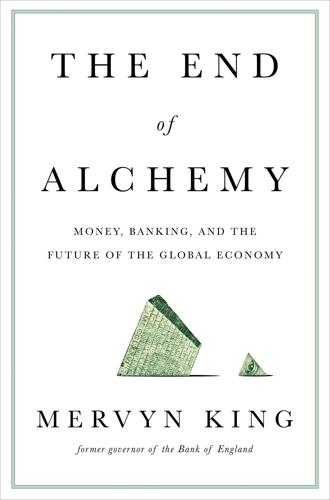
The End of Alchemy: Money, Banking and the Future of the Global Economy
by
Mervyn King
Published 3 Mar 2016
Keen though western consumers were on spending, their appetite was not strong enough to offset the even greater wish of emerging economies to save. The consequence was that in the world economy as a whole there was an excess of saving, or in the vivid phrase of Ben Bernanke, Chairman of the Federal Reserve from 2006 to 2014, a ‘savings glut’ in the new expanded global capital market.20 This glut of saving pushed down long-term interest rates around the world. We think of interest rates as being determined by the Federal Reserve, the Bank of England, the European Central Bank (ECB) and other national central banks. That is certainly true for short-term interest rates, those applying to loans for a period of a month or less.
…
If over the course of that year the price of the things that you like to buy is expected to rise by 5 per cent, then the ‘real’ rate of interest you earn is the money rate less the anticipated rate of inflation (in this example the real rate is zero). In recent years, short-term real interest rates have actually been negative because official interest rates have been less than the rate of inflation. And the savings glut pushed down long-term real interest rates to unprecedentedly low levels.21 In the nineteenth century and most of the twentieth, real rates were positive and moved within a range of 3 to 5 per cent. My estimate is that the average ten-year world real interest rate fell steadily from 4 per cent or so around the fall of the Berlin Wall to 1.5 per cent when the crisis hit, and has since fallen further to around zero.22 As the Asian economies grew and grew, the volume of saving placed in the world capital market by their savers, including the Chinese government, rose and rose.
…
What started as an imbalance between countries became a disequilibrium within economies. When the world economy is functioning well, capital normally flows from mature to developing economies where profitable opportunities abound, as happened in the late nineteenth century when Europe invested in Latin America. A strange feature of the savings glut was that because emerging economies were saving more than they were investing at home, they were actually exporting capital to advanced economies where investment opportunities were more limited. In effect, advanced economies were borrowing large sums from the less developed world. The natural direction of capital flows was reversed – capital was being pushed ‘uphill’.25 Much of those capital flows passed through the western banking system, and this led to the second key development before the crisis – the rapid expansion of bank balance sheets, or in the phrase of Hyun Song Shin, Chief Economist at the Bank for International Settlements, a ‘banking glut’.26 A bank’s balance sheet is a list of all the bank’s assets and all its liabilities.
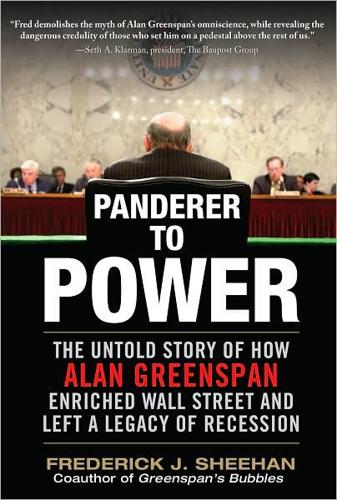
Panderer to Power
by
Frederick Sheehan
Published 21 Oct 2009
From 2001 through 2005, the ratio was $4.30 of debt to every dollar of nominal growth.10 Finance, rather than capital investment, generated growth. Bernanke’s World Ben Bernanke seemed to think that all was well. He was not concerned about the trade and finance imbalances. He was a leading missionary of a hot phrase: the “global savings glut.” He chided foreigners for saving too much. In Bernanke’s world, Americans were consuming as they should. His statement at the head of the chapter is from a “global savings glut” speech delivered in March 2005. In April, with time to revise his insight, he showed no better grasp of home economics: “[T]he recent capital inflow into the developed world has shown up in higher rates of home construction and in higher home prices.
…
Greenspan has emerged from the sixfigure speaking circuit with his memoir, ‘The Age of Turbulence.’” The Journal castigated Greenspan—and Bernanke—for “offering alibis for how we arrived at this pass.” It had little patience with a recent speech by the new chairman, in which Bernanke used the “global savings glut” as “his full-field explanation of just about everything. . . . The problem with this explanation is it omits the Fed’s role in producing this ‘savings glut.’ Billions of people around the world didn’t suddenly become more thrifty this decade. It was the Fed’s low interest rate policy—especially a 1% fed funds . . . that helped spur a global commodity price boom.”3 The Journal went on to condemn the dissembling by Bernanke and Greenspan: “Contrary to the dreams of Wall Street there is no free monetary lunch. . . .
…
Between 2001 and 2006, Asha Bangalore, economist at Northern Trust, estimated that 40 percent of new jobs were related to housing.3 This was not sustainable. The manufacturing economy kept shrinking. From the end of 2000 to 2004, manufacturing wages and salaries fell from $819 billion to 1 Ben S. Bernanke, “The Global Savings Glut and the U.S. Current Account Deficit,” Sandridge Lecture, Virginia Association of Economics, Richmond, Virginia, March 10, 2005. 2 OECD.StatExtracts. Dataset: balance of payments, United States. Annual data. Actual numbers: $417 billion in 2000, $624 billion in 2004, and $788 billion in 2006. 3 William A.
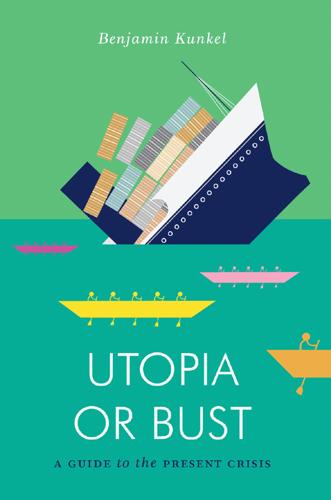
Utopia or Bust: A Guide to the Present Crisis
by
Benjamin Kunkel
Published 11 Mar 2014
Paul Krugman, discussing Roubini’s book in the New York Review of Books, agreed with him that what Ben Bernanke called the “global savings glut” lay at the heart of the crisis, behind the proximate follies of deregulation, mortgage-securitization, excessive leverage and so on. Originating in the current account surpluses of net-exporting countries such as Germany, Japan, and China, this great tide of money flooded markets in the US and Western Europe, and floated property and asset values unsustainably. Why was so much capital so badly misallocated? In the London Review of Books (April 22, 2010), Joseph Stiglitz observed that the savings glut “could equally well be described as an ‘investment dearth,’ ” reflecting a scarcity of attractive investment opportunities.
…
In the London Review of Books (April 22, 2010), Joseph Stiglitz observed that the savings glut “could equally well be described as an ‘investment dearth,’ ” reflecting a scarcity of attractive investment opportunities. Stiglitz suggests that global warming mitigation or poverty reduction offers new “opportunities for investments with high social returns.” The neo-Keynesians’ “savings glut” can readily be seen as a case of what a more radical tradition calls overaccumulated capital. But it is the broader and more systematic Marxist perspective that ultimately and properly contains Keynesianism within it, and a crude Marxist catechism may be in order. Where does an excess of savings come from? From unpaid labor—for example, that of Chinese or German workers.
…
But among Americans, wage growth had ceased and household incomes could no longer be supplemented by the mass entry of women into the workforce, something already accomplished. The issuance and securitization of debt alone could substitute for present income. In the end, so much fictitious capital could not be redeemed. Whatever the destination of future Chinese savings gluts, they are unlikely to sponsor American consumption in the same way. In his final book, Adam Smith in Beijing (2007), the late Giovanni Arrighi expanded on Harvey’s concepts of the spatial fix and the switching crisis to survey half a millennium of capitalist development and to peer into a new, perhaps Chinese century.
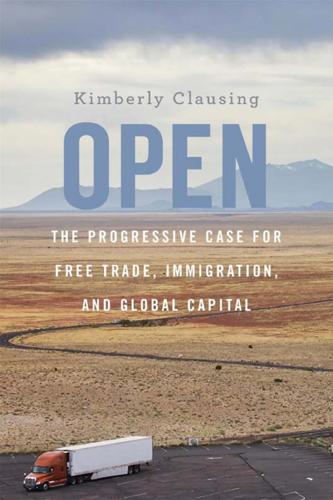
Open: The Progressive Case for Free Trade, Immigration, and Global Capital
by
Kimberly Clausing
Published 4 Mar 2019
See Germán Gutiérrez and Thomas Philippon, “Investment-Less Growth: An Empirical Investigation,” Working Paper 22897, NBER Working Papers, National Bureau of Economic Research, 2016. 15. On the savings glut, see: Ben S. Bernanke, “Why Are Interest Rates so Low, Part 3: The Global Savings Glut,” Brookings, April 1, 2015, https://www.brookings.edu/blog/ben-bernanke/2015/04/01/why-are-interest-rates-so-low-part-3-the-global-savings-glut/. On secular stagnation, see Lawrence H. Summers, “Secular Stagnation and Monetary Policy,” Federal Reserve Bank of St. Louis 98:2 (2016), 93–110. 16. See David Weil, The Fissured Workplace: Why Work Became So Bad for So Many and What Can Be Done to Improve It (Cambridge, MA: Harvard University Press, 2014). 17.
…
Since 1980, corporate profits after tax have increased dramatically, from about 6 percent of GDP to over 9 percent of GDP.13 And the cash stockpiles of the world’s most successful companies are not necessarily fueling the sorts of investments that ultimately benefit workers by raising their productivity. In fact, greater market concentration has been associated in recent years with lower investment.14 Many prominent macroeconomists worry about an excess of savings relative to investment—among them, Ben Bernanke, who worries about a “savings glut,” and Larry Summers, who is pessimistic about “secular stagnation.”15 When companies earn outsized returns, this squeezes the returns for other factors of production throughout the economy. Workers in the most successful firms often do just fine, but as more and more of national income accrues to the most successful firms, workers in other companies experience greater competition and lower real wage increases.
…
See Tax Cuts and Jobs Act Public opinion, 292–293 Purchasing power parity (PPP), 320n34 Race to bottom, 154–155 Reagan Administration, 265 Reemployment Trade Adjustment Assistance (RTAA), 228–229 Regulation, 164, 273–275 Reinventing Government, 273–274 Relocation assistance, 229–230 Remittances, 206 Reputation Institute, 277 Research and Development, 176, 235 Ricardo, David, 70 Rising-tide tax system, 247 Robinson, James, 64, 189–190 Rules of origin, 315n12 Sanders, Bernie, 25, 76 Savings glut, 151 Secular stagnation, 40, 151 Showdown at Gucci Gulch, 264–265 Silicon Valley, 181–182 Smith, Adam, 284, 316n1 Social Norms, 42–44, 276–278, 282 Social Security, 241–242 Stateless income, 159 Statue of Liberty, 212 Summers, Lawrence, 151, 307n29 Sunshine labor report, 278–283 Sunshine tax report.
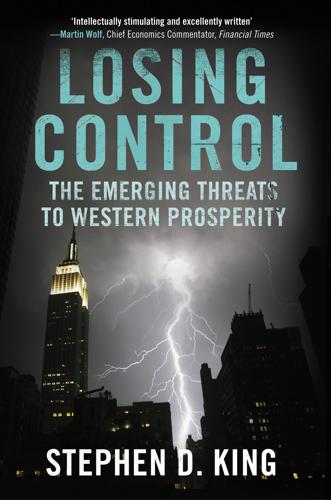
Losing Control: The Emerging Threats to Western Prosperity
by
Stephen D. King
Published 14 Jun 2010
The inability of the G7 to reach any kind of credible agreement, notwithstanding the Plaza and Louvre accords in 1985 and 1987 respectively, led to upheavals in currency markets and, eventually, the 1987 stock-market crash.1 Japan and Germany remain important providers of capital, but from the mid-1990s onwards the really big suppliers have been China, the Middle East, Russia and an assortment of other emerging economies. Ben Bernanke, the Chairman of the Board of Governors of the Federal Reserve, famously referred to these imbalances as ‘The Global Savings Glut’.2 The argument boils down to a matter of supply and demand in the capital markets. If the rapidly expanding US current-account deficit reflected a rise in US demand for global capital, that increased demand should have raised the ‘price’ of capital. In other words, US interest rates should have gone up to attract the additional funds US borrowers wanted to suck in from abroad.
…
After all, no one argues that the increase in drug usage that follows a fall in the street price of crack cocaine is a good thing, even though it’s a perfectly reasonable example of the market at work. The influence on the world’s capital markets of savings behaviour in emerging economies is, in fact, considerably more complicated than the simple global savings glut thesis suggests. And, because this influence has not been properly recognized, the Western world has been subject to increasing financial shocks. While many countries shifted from current-account deficit to surplus, one emerging Asian economy started with a large current-account surplus and saw the surplus get bigger and bigger over time.
…
The redistributional consequences of these price changes provide an increasingly strong incentive for governments to intervene in an attempt to bypass or distort the market. EXCESS SAVINGS AND COMMAND OVER ASSETS The increased economic clout of sovereign states partly reflects the global savings glut we first came across in Chapter 4. If the emerging economies carry on saving more than they’re spending and countries in the developed world – at least the US and the UK – carry on borrowing more than they’re earning, there are huge implications for ownership of almost every conceivable asset, from bonds to stocks and from companies to residential real estate.
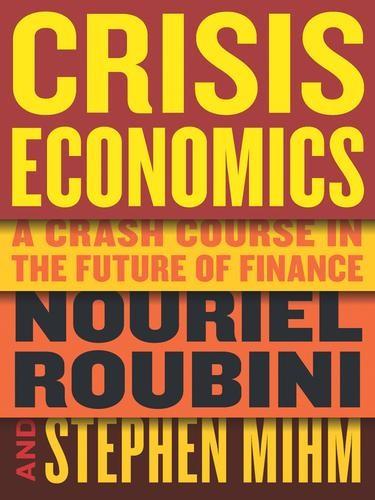
Crisis Economics: A Crash Course in the Future of Finance
by
Nouriel Roubini
and
Stephen Mihm
Published 10 May 2010
November 13, 2005, online at http://www.cid.harvard.edu/cidpublications/darkmatter_051130.pdf. 248 This argument has been challenged: Roubini, “Global Imbalances: A Contemporary ‘Rashomon’ Saga,” November 2006. See also Barry Eichengreen, “Global Imbalances: The New Economy, the Dark Matter, the Savvy Investor, and the Standard Analysis,” March 2006, online at http://www.econ.berkeley.edu/~eichengr/matter.pdf. 249 “global savings glut”: Ben S. Bernanke, “The Global Savings Glut and the U.S. Current Account Deficit,” Homer Jones Lecture, St. Louis, Mo., April 14, 2005, online at http://www.federalreserve.gov/boarddocs/speeches/2005/20050414/default.htm. 251 “exorbitant privilege”: Giscard d’Estaing quoted in Richard A. Iley and Mervyn Lewis, Untangling the U.S.
…
In other words, the income stream from credit card debt, home equity loans, auto loans, student loans, and mortgages ended up in the portfolios of foreign investors via the process of securitization. By making those purchases, foreign creditors helped finance the borrowing binge that drove the bubble. Just how much foreign investors underwrote the boom remains an open question. Much rides on the answer: some commentators have used the “global savings glut” hypothesis to blame the crisis on China and the other creditors of the United States. That misplaced analysis wrongly shifts the blame from problems in the United States. But what is indisputable is that this pool of savings in search of investments ended up in the United States. In the process, it inadvertently helped the United States live far beyond its means for far too long.
…
The United States was bad, but it was hardly the worst offender, even if it may have generated more problem loans than any other country. Whatever the rate of appreciation, the reasons for the boom were invariably the same. Most of these countries had pursued easy monetary policies, so that borrowing costs hit historic lows, a trend only reinforced by a global savings glut. By 2006, mortgage rates in every developed and developing economy had declined to single digits for the first time ever. And like the United States, most countries did little to regulate their mortgage and financial markets. The result was the same: as home prices went up, households in these countries felt wealthier; they spent more and saved less.

Investing Amid Low Expected Returns: Making the Most When Markets Offer the Least
by
Antti Ilmanen
Published 24 Feb 2022
Japan was early with near-zero bond yields, but several European countries have overtaken Japan, with many trillions (trn) of euros worth of debt earning mildly negative nominal yields.9 Many forces have contributed to the decline in real bond yields. The most relevant for this book is an explanation focusing on the imbalance between savings supply and investment demand. The “saving glut” hypothesis initially emphasized how trade surpluses and reserve accumulation in China and other emerging economies have boosted the global saving propensity and thus put downward pressure on real yields. Another source of saving glut is related to demographics and a growing need for pension savings in an ageing society.10 Indeed, the low expected return challenge may raise saving rates if pension savers have a certain target for the retirement nest egg and they realize that juicy market returns will no longer do the work for them.
…
Apart from central bank policies, regulatory pressures such as liability matching or solvency capital requirements, and bonds' role as safe-haven negative-beta assets, can push private institutions to hold bonds even at negative yields. 10 Both the reserve accumulation (e.g. Bernanke (2005)) and pension saving motives (e.g. Kopecky-Taylor (2020)) favor conservative assets like bonds (especially for the older pension savers and retirees), which points to low safe-asset yields but not to compressed risk premia. A third source of saving glut has recently been identified by Mian-Straub-Sufi (2020), that of the rich (“the 1%”). This last group is likely to save more and to favor riskier investments. It seems like a fruitful area of research to empirically compare the magnitudes and impacts of these different sources of excess savings. 11 Each FAMAG firm has a market capitalization in excess of $1trn, some even exceeding $2trn, in summer 2021.
…
One strand of literature tries to estimate the evolution of R*, the natural or neutral real policy rate consistent with stable inflation and output at equilibrium level. The main theoretical drivers of R* are productivity and demographics.4 The slowdown in both has certainly contributed to the low real rates, and there is little sign that these trends are turning.5 Another driver, the saving glut, was discussed in Chapter 2.6 Forecasting gradual normalization (i.e. a rise) in nominal and real rates is a commonly held base case. It seems plausible and in line with market pricing. After more than two decades of well-anchored inflation expectations, the inflation outlook seems exceptionally uncertain in 2021.
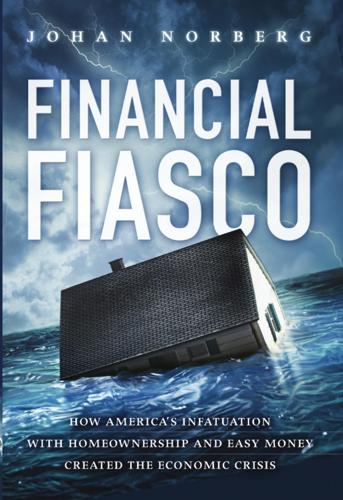
Financial Fiasco: How America's Infatuation With Homeownership and Easy Money Created the Economic Crisis
by
Johan Norberg
Published 14 Sep 2009
Most of those savings they exported to the United States by buying Treasuries, causing the price of money there-the interest rate-to stay low. This was one explanation for the much-talked-about global imbalances that involved Americans' borrowing and importing more and more while saving less and less. Fed chairman Ben Bernanke has referred to this as a "savings glut." It is a paradoxical but well-known phenomenon that poor people often save a larger proportion of their income than rich people, because the poor need a buffer for bad times and unforeseen expenses. As the income of the poor has risen, so have their savings, but investment opportunities are often limited in countries with many poor people, in part because the financial markets there are so underdeveloped that it would be impossible to gain a decent return.
…
Index ABN AMRO acquisition, 119 constant-proportion debt obligation, 59-60 accounting, 141 mark-to-market, 91-94 ACORN (Association of Community Organizations for Reform Now), 28, 34 adjustable-rate mortgages, 7, 71 AIG (American Insurance Group), 56, 82, 88-91, 136 retreats and other exclusive trips, 91 "Alt-A" loans, 42 "American Dream Commitment" of Fannie Mae, 33 Andrukonis, David, 40-41, 77 Apgar, William, 32, 35 Asian crisis of 1997, 16, 21 asset bubbles consumer prices and, 11-12 economic crises and, 21 Federal Reserve and, 13 laws of, 69 the "Three Is" and, 58 Atkins, Paul, 79, 145 Auerbach, Alan, 153 bailouts, 14, 91, 99-100, 141-42 arbitrariness of the dollar figure, 118 failed, 85-86 of Fannie Mae and Freddie Mac, 78-79 housing industry, 127 Troubled Assets Relief Program, 99, 100, 113, 115-16, 118-28 See also crisis management Baker, Richard, 39 Bank of America Countrywide and, 72 Merrill Lynch and, 82-83, 85-86 banks and banking industry bank mergers, 27, 28 bank runs, 49-50, 70-75 capital requirements, 49, 51-54, 133, 141 conduits, 52 overconcentration, 104 preventing banking crises, 50, 51 recapitalizing, 118-28 securitization of mortgages, 49-55 shadow banking sector, 52-53, 70-75, 133 structured investment vehicles, 52 Barclays, 82-83 Bartlett, Bruce, 20-21 Basel banking standards and rules, 49, 51-54,135,145-46 Bayers, Betsy, 72 Bear Stearns, 57, 85 hedge funds collapse, 72, 80-81, 113 oversubscribed securitized mortgages, 27 "Bear Stearns Precedent," 82 Bennett, Richard, 40 Berlusconi, Silvio, 119 Bernanke, Ben, 4, 78, 99, 100, 116-17, 121, 149 "Bernanke put," 13, 14-15 on Friedman and Schwartz, 123 "savings glut," 15-16 shorting and, 110 Bernholz, Peter, 143-44 Big Three automakers, 125 Black Monday (October 19, 1987), 2, 13, 14 The Black Swan, 43 Blankfein, Lloyd, 88-89 BNC Mortgage, 55 BNP Paribas, 74 borrowers, "subprime" behind in payments and defaulting, 71-72 definitions, 29-30, 41 early repayment penalties, 34 previously defaulting borrowers, 31 See also subprime mortgages Brown, Gordon, 98, 120, 149, 154 Buffett, Warren, 58, 74-75, 140 bugs in rating software, 59-60 Bush, George H.
…
See also Troubled Assets Relief Program history with Goldman Sachs, 113, 114 on institutional failure, 151-52 power and control and, 112-18 shorting and, 110 Pelosi, Nancy, 115-16 planned economy, 150 Greenspan and, 12-13 politicians and politics exploitation of crisis, 112-18 influence of, 132 Stockholm syndrome of politics, 145-52 Poole, William, 78 poor countries and people globalization and, 15-17 savings glut and, 15-16 power and control, exploitation of crises and, 112-13, 149 "preemptive Keynesianism," 14 prelude to crisis. See borrowers, "subprime'; financial innovations for risk pooling; housing policy; monetary policy prices of goods and services, central bank control, 11 Prince, Charles, 57-58, 76 privatizing gains and socializing losses, 50-51, 78-79, 135, 142 prosperity, 18, 21 public ownership of society's assets, 152-53 Putnam Investments, 84 pyramid schemes, 58 Qviberg, Mats, 111 Raines, Franklin D., 32, 38 Rajan, Raghuram, 52 Ranieri, Lewis, 47, 63 rating software, 58-60 real estate capital gains tax, 6 recessions, 14 reform proposals, 39-40 regime uncertainty, 107 regulations, 107-8, 131, 133-34, 138-45 Reich, Robert, 125-26 rent subsidy, 5-6 repackaging mortgages.

The Euro: How a Common Currency Threatens the Future of Europe
by
Joseph E. Stiglitz
and
Alex Hyde-White
Published 24 Oct 2016
(1) MAKING THE FINANCIAL SYSTEM SERVE SOCIETY Most of the discussion of financial sector reform (including that above, under Reform #2) has focused on preventing the financial sector from imposing harm on others—for instance, through the instability it has brought to the entire economy as a result of its excessive risk-taking.31 Little has focused on ensuring that the financial system actually performs the important functions that must be performed if the economy is to function well. It is precisely this failure that is behind the alleged savings glut: Ben Bernanke attempted to blame the weakness in the global economy before the crisis on excessive global savings, especially in China. But even as he spoke about the savings glut, many firms and countries had high-return investment projects that were not being financed. It is not that there is a surfeit of savings. It is that the financial markets have failed in their basic task of recycling the savings, making sure that the savings are used productively.
…
Indeed, one of the reasons that the Fed encouraged the reckless lending that led to the housing crisis was to make up for what would otherwise have been a weak aggregate demand within the United States. Ben Bernanke, former chairman of the Federal Reserve, referred to the situation as a “savings glut.” See “The Global Saving Glut and the U.S. Current Account Deficit,” Remarks by Governor Ben S. Bernanke at the Sandridge Lecture, Virginia Association of Economists, Richmond, Virginia, March 10, 2005, available at http://www.federalreserve.gov/boardDocs/Speeches/2005/200503102/default.htm. Of course, there are many good investment opportunities, but the world’s financial system wasn’t then—and isn’t now—capable of intermediating effectively between the savers and these investments. 46 This number is higher than the US minimum wage but much lower than the $15 an hour that is being adopted in some American cities, and even lower than the $10.10 an hour required for enterprises doing business with the US government. 47 Thus, the eurozone’s surplus was substantially larger than China’s, which stood at $293.2 billion.
…
Such a super–Chapter 11 is particularly important in the crisis countries right now.36 (4) PROMOTING ENVIRONMENTAL INVESTMENTS A eurozone that works has to have not just high growth but sustainable growth, and sustainability entails not just economic sustainability but environmental sustainability. Once one recognizes the huge investments that are needed to retrofit the economy for climate change, one sees the foolishness of any claims that there is a “savings glut.” But, as we have seen, it will be hard to incentivize firms to make “green investments” if there is no price of carbon—that is, if those who pollute are not forced to pay the consequences of their pollution. That is why it is important for there to be a high, European-wide price of carbon.37 STRUCTURAL REFORM #7: A COMMITMENT TO SHARED PROSPERITY One of the central problems facing the advanced world today is the increase in inequality.

The Cost of Inequality: Why Economic Equality Is Essential for Recovery
by
Stewart Lansley
Published 19 Jan 2012
In January 2009, the Guardian newspaper drew up a list of 25 guilty parties, a mix of Central Bank governors, American and British political leaders, top Wall Street financiers and British bankers and credit agency bosses. Some analysts—notably the former Chairman of the Federal Reserve, Sir Alan Greenspan, and its current Chairman, Ben Bernanke—have pinned some of the blame for the 2008-2009 crisis on what Bernanke described in 2005 as Asia’s ‘savings glut’. This was the surplus accumulated in a number of successful Asian exporting countries —notably China—that was then recycled via financial institutions into the main importing and deficit nations. This money derived from the increase in the foreign exchange reserves accruing to countries with large export surpluses, from China to the Middle-Eastern oil producers.
…
Such flows have inevitably played a role in adding to global imbalances, but are of secondary importance, small beer compared with the rise of other sources of international credit and liquidity which grew to levels that were greatly in excess of that needed to run economies productively. As shown in figure 6.4, the Asian savings glut—$2200 billion in 2007—added up to around one per cent of the stock of global financial assets (of $220,000 billion). It was this much greater growth of global liquidity that created what became a severe economic shock to the system. As the economist, José Gabriel Palma of Cambridge University has concluded, ‘If this glut were in fact the “smoking gun” of the current crisis, never in the history of finance would anything have had such a multiplier effect.’233 Each of these were important ingredients of the global implosion.
…
The regulators failed to understand the dangerous implications of the new derivative-linked financial instruments—collateralised debt obligations, credit default swaps and special investment vehicles—that helped drive up world liquidity rates while greatly raising the level of risk in the system. Amongst those individually responsible, those on watch in the US and the UK were more culpable than those in other nations. Asia’s ‘savings glut’ (Figure 6.4) 234 Nevertheless, these issues only tell part of a much bigger story. Indeed, the common explanations offered for the financial crisis cannot be seen as primary causes, but symptoms of much more-deep seated trends. They deal more in epiphenomena than fundamentals. Reckless behaviour by an unregulated banking system provided the final spark, but the slow-burning fuse had been laid much earlier in the growing income and wealth inequalities that became the hallmark of market capitalism.
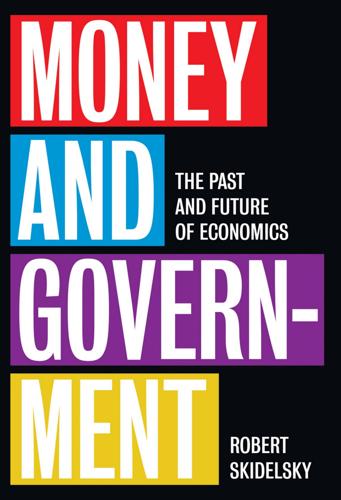
Money and Government: The Past and Future of Economics
by
Robert Skidelsky
Published 13 Nov 2018
Or country B might run a current account deficit because country A’s policies – for example, restricting consumption or maintaining an under-valued currency – prevent country B from exporting enough to it to cover its imports from country A. Country B’s deficits are then said to be caused by country A’s ‘saving glut’. Which is it? You can choose between China’s frugality and American extravagance. The ‘saving glut’ thesis was the orthodox pre-crash view. Think of the world as a single economy, in which all the saving is done in China and all the investment is done in the United States. If the Chinese want to save ex ante more than the Americans want to invest, * Because it did not have a fixed supply of gold, the US was able to issue as many Treasury bills as it wanted. 338 g l ob a l i m b a l a n c e s Keynesian theory tells us that saving S and investment I are equalized ex post not by an an appropriate interest rate adjustment, but by a fall in global income.
…
Financial Innovation 322 vi. Conclusion 327 Appendix 11.1: Why Didn’t the Credit Ratings Agencies Do Their Job? 12. Global Imbalances 329 331 i. Introduction 331 ii. A Pre-crash Bird’s-eye View 334 x C on t e n t s iii. Some Basic Theory 335 iv. Current Account Imbalances as a Cause of Meltdown? 336 v. Saving Glut versus Money Glut 338 vi. Banking Imbalances 342 vii. Conclusion 343 Pa r t Fou r A New Macroeconomics 13. Reinventing Political Economy 345 347 i. Introduction 347 ii. What Should Governments Do and Why? 349 iii. A New Macroeconomic Constitution 351 iv. The Inflation Problem 358 v.
…
Shultz and Martin Feldstein, Washington Post, 5 May 2017 I. I n t roduc t ion How far did global imbalances contribute to the crisis? By global imbalances we mean persistent surpluses and deficits in countries’ current accounts. A pseudo-Keynesian answer would be that the current account surpluses of China and the Middle East produced a global ‘savings glut’, which could only be liquidated by a decline in the world economy. But this does not explain the weakness of investment performance in the capital-importing countries. In Keynesian theory, ‘excess saving’ is the result of under-investment, not an independent factor. So it is the weakness in the inducement to invest which needs explaining.
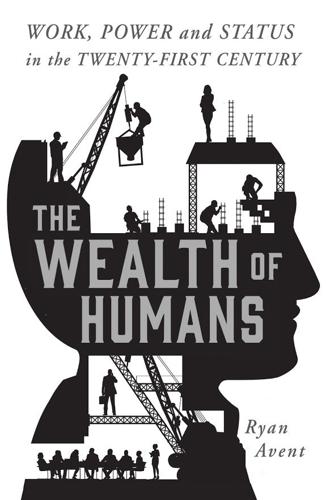
The Wealth of Humans: Work, Power, and Status in the Twenty-First Century
by
Ryan Avent
Published 20 Sep 2016
This effectively squeezed the consumption of Chinese consumers in order to build up a pile of reserves that could be tapped during times of global financial trouble. The upshot of this reserve accumulation was growth in what Ben Bernanke,2 during his time at the Federal Reserve, called a global savings glut.3 Excess saving meant a shortfall in global consumption, in global demand. To prevent demand from tumbling, central banks needed to take what action they could to push markets to recycle those savings into new spending. Interest rates around the world sank to historically low levels as central banks struggled to cope.
…
Ben Shalom Bernanke (1953–) is an American economist who served two terms as chairman of the Federal Reserve, the central bank of the United States, from 2006 to 2014. During his tenure as chairman, Bernanke oversaw the Federal Reserve’s response to the late-2000s financial crisis. 3. Bernanke, Ben, in his speech ‘The Global Saving Glut and the US Current Account Deficit’, 10 March 2005. 4. Bank for International Settlements, Total Credit to Households as a Percentage of GDP (http://stats.bis.org/statx/srs/table/f3.1). 5. Federal Reserve Bank of New York, Household Debit and Credit Report. 6. Wolff, Edward, ‘Household Wealth Trends in the United States, 1962–2013: What Happened Over the Great Recession?’
…
Acemoglu, Daron ageing populations agency, concept of Airbnb Amazon American Medical Association (AMA) anarchism Andreessen, Marc Anglo-Saxon economies Apple the iPhone the iPod artisanal goods and services Atkinson, Anthony Atlanta, Georgia austerity policies automation in car plants fully autonomous trucks of ‘green jobs’ during industrial revolution installation work as resistant to low-pay as check on of menial/routine work self-driving cars and technological deskilling automobiles assembly-line techniques automated car plants and dematerialization early days of car industry fully autonomous trucks self-driving cars baseball Baumol, William Belgium Bernanke, Ben Bezos, Jeff black plague (late Middle Ages) Boston, Massachusetts Brazil BRIC era Bridgewater Associates Britain deindustrialization education in extensions of franchise in financial crisis (2008) Great Exhibition (London 1851) housing wealth in and industrial revolution Labour Party in liberalization in political fractionalization in real wages in social capital in surpassed by US as leading nation wage subsidies in Brontë, Charlotte Brynjolfsson, Erik bubbles, asset-price Buffalo Bill (William Cody) BuzzFeed Cairncross, Frances, The Death of Distance (1997) capital ‘deepening’ infrastructure investment investment in developing world career, concept of cars see automobiles Catalan nationalism Central African Republic central banks Chait, Jonathan Charlotte chemistry, industrial Chicago meat packers in nineteenth-century expansion of World’s Columbia Exposition (1893) China Deng Xiaoping’s reforms economic slow-down in era of rapid growth foreign-exchange reserves ‘green jobs’ in illiberal institutions in inequality in iPod assembly in technological transformation in wage levels in Chorus (content-management system) Christensen, Clayton Cisco cities artisanal goods and services building-supply restrictions growth of and housing costs and industrial revolution and information membership battles in rich/skilled and social capital clerical work climate change Clinton, Hillary Coase, Ronald Columbia University, School of Mines communications technology communism communities of affinity computing app-based companies capability thresholds cloud services cycles of experimentation desktop market disk-drive industry ‘enterprise software’ products exponential progress narrative as general purpose technology hardware and software infrastructure history of ‘Moore’s Law’ and productivity switches transistors vacuum tubes see also digital revolution; software construction industry regulations on Corbyn, Jeremy Corliss steam engine corporate power Cowen, Tyler craft producers Craigslist creative destruction the Crystal Palace, London Dalio, Ray Dallas, Texas debt deindustrialization demand, chronically weak dematerialization Detroit developing economies and capital investment and digital revolution era of rapid growth and industrialization pockets of wealth in and ‘reshoring’ phenomenon and sharp slowdown and social capital see also emerging economies digital revolution and agency and company cultures and developing economies and distance distribution of benefits of dotcom tech boom emergence of and global imbalances and highly skilled few and industrial institutions and information flows investment in social capital niche markets pace of change and paradox of potential productivity and output and secular stagnation start-ups and technological deskilling techno-optimism techno-pessimism as tectonic economic transformation and trading patterns web journalism see also automation; computing; globalization discrimination and exclusion ‘disruption’, phenomenon of distribution of wealth see inequality; redistribution; wealth and income distribution dotcom boom eBay economics, classical The Economist education in emerging economies during industrial revolution racial segregation in USA and scarcity see also university education electricity Ellison, Glenn Ellison, Sara Fisher emerging economies deindustrialization economic growth in education in foreign-exchange reserves growth in global supply chains highly skilled workers in see also developing economies employment and basic income policy cheap labour as boost to and dot.com boom in Europe and financial crisis (2008) ‘green jobs’ low-pay sector minimum wage impact niche markets in public sector ‘reshoring’ phenomenon as rising globally and social contexts and social membership as source of personal identity and structural change trilemma in USA see also labour; wages Engels, Friedrich environmental issues Etsy euro- zone Europe extreme populist politics liberalized economies political fractionalization in European Union Facebook face-recognition technology factors of production land see also capital; labour ‘Factory Asia’ factory work assembly-line techniques during industrial revolution family fascism Federal Reserve financial crisis (2008) financial markets cross-border capital flows in developing economies Finland firms and companies Coase’s work on core competencies culture of dark matter (intangible capital) and dematerialization and ‘disruption’ ‘firm-specific’ knowledge and information flows internal incentive structures pay of top executives shifting boundaries of social capital of and social wealth start-ups Ford, Martin, Rise of the Robots (2015) Ford Motor Company fracking France franchise, electoral Friedman, Milton Fukuyama, Francis Gates, Bill gender discrimination general purpose technologies enormous benefits from exponential progress and skilled labour supporting infrastructure and time lags see also digital revolution Germany ‘gig economy’ Glaeser, Ed global economy growth in supply chains imbalances lack of international cooperation savings glut and social consensus globalization hyperglobalization and secular stagnation and separatist movements Goldman Sachs Google Gordon, Robert Gothenburg, Sweden Great Depression Great Depression (1930s) Great Exhibition, London (1851) Great Recession Great Stagnation Greece ‘green jobs’ growth, economic battle over spoils of boom (1994-2005) and classical economists as consistent in rich countries decline of ‘labour share’ dotcom boom emerging economies gains not flowing to workers and industrial revolution Kaldor’s ‘stylized facts of’ and Keynes during liberal era pie metaphor in post-war period and quality of institutions and rich/elite cities rich-poor nation gap and skilled labour guilds Hansen, Alvin Hayes, Chris, The Twilight of the Elites healthcare and medicine hedge funds and private equity firms Holmes, Oliver Wendell Hong Kong housing in Bay-Area NIMBY campaigns against soaring prices pre-2008 crisis zoning and regulations Houston, Texas Huffington Post human capital Hungary IBM identity, personal immigration and ethno-nationalist separatism and labour markets in Nordic countries and social capital income distribution see inequality; redistribution; wealth and income distribution India Indonesia industrial revolution automation during and economic growth and growth of cities need for better-educated workers and productivity ‘second revolution’ and social change and wages and World’s Fairs inequality and education levels between firms and housing wealth during industrial revolution during liberal era between nations pay of top executives rise of in emerging economies and secular stagnation in Sweden wild contingency of wealth see also rich people; wealth and income distribution inflation in 1970s hyperinflation information technology see computing Intel interest rates International Space Station (ISS) iRobot ISIS Italy Jacksonville, Florida Jacquard, Joseph Marie Japan journalism Kaldor, Nicholas Keynes, John Maynard Kurzweil.
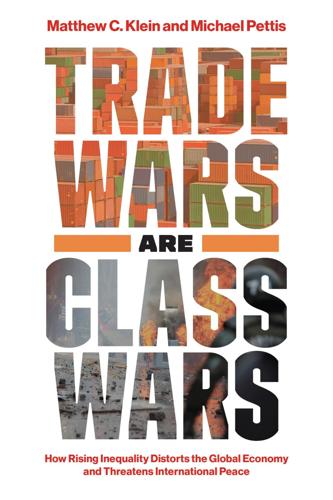
Trade Wars Are Class Wars: How Rising Inequality Distorts the Global Economy and Threatens International Peace
by
Matthew C. Klein
Published 18 May 2020
European Commission, “VAT Rates Applied in the Member States of the European Union: Situation at 1st January 2018,” https://ec.europa.eu/taxation_customs/sites/taxation/files/resources/documents/taxation/vat/how_vat_works/rates/vat_rates_en.pdf; Zsolt Darvas, “EU Income Inequality Decline: Views from an Income Shares Perspective,” Bruegel, July 5, 2018, http://bruegel.org/2018/07/eu-income-inequality-decline-views-from-an-income-shares-perspective/. 66. Matthew C. Klein, “European Leaders Seem Determined to Remake the ‘Global Savings Glut’ on a Massive Scale,” FT Alphaville, November 8, 2017, https://ftalphaville.ft.com/2017/11/08/2195596/european-leaders-seem-to-determined-to-remake-the-global-savings-glut-on-a-massive-scale/. SIX The American Exception 1. Based on BEA, “International Transaction Accounts,” tables 1.1, 9.1, https://apps.bea.gov/iTable/index_ita.cfm; Tamim Bayoumi, Joseph Gagnon, and Christian Saborowski, “Official Financial Flows, Capital Mobility, and Global Imbalances,” Peterson Institute for International Economics Working Paper No. 14-8, October 23, 2014; and Brad W.
…
It is less obvious, but just as important, that those investments require rising consumption to be profitable. Building truck factories or apartment complexes or power plants is not “investing” in any meaningful sense if nobody ends up buying more trucks, living in the apartments, or needing the extra electricity. It is just waste.14 This explains how the world can be afflicted by a savings glut without having a high saving rate. The level of the saving rate by itself is meaningless. What matters is the amount of unconsumed output relative to the supply of worthwhile investment opportunities. Saving is excessive when real resources are diverted from the satisfaction of immediate human needs to develop wasteful investments.
…
Shultz and Martin Feldstein, “Everything You Need to Know about Trade Economics, in 70 Words,” Washington Post, May 5, 2017; Jason Furman, “Worry about the Trade Deficit—a Bit,” Wall Street Journal, May 1, 2018; Joseph E. Stiglitz, “The US Is at Risk of Losing a Trade War with China,” Project Syndicate, July 30, 2018, https://www.project-syndicate.org/commentary/trump-loses-trade-war-with-china-by-joseph-e-stiglitz-2018-07. 6. Joseph W. Gruber and Steven B. Kamin, “The Corporate Saving Glut in the Aftermath of the Global Financial Crisis,” International Finance Discussion Papers 1150, June 2015; Matthew C. Klein, “Aging, Real Rates, and Labour Bargaining Power: The Case of Japan,” FT Alphaville, December 8, 2015, https://ftalphaville.ft.com/2015/12/08/2147125/aging-real-rates-and-labour-bargaining-power-the-case-of-japan/. 7.

The Ascent of Money: A Financial History of the World
by
Niall Ferguson
Published 13 Nov 2007
Of all the securities quoted on the London Stock Exchange in 1913 nearly half (48 per cent) were foreign bonds.23 Gross foreign assets in 1913 were equivalent to around 150 per cent of UK GDP and the annual current account surplus rose as high as 9 per cent of GDP in 1913 - evidence of what might now be called a British savings glut. Significantly, a much higher proportion of pre-1914 capital export went to relatively poor countries than has been the case more recently. In 1913, 25 per cent of the world’s stock of foreign capital was invested in countries with per capita incomes of a fifth or less of US per capita GDP; in 1997 the proportion was just 5 per cent.24 It may be that British investors were attracted to foreign markets simply by the prospect of higher returns in capital-poor regions.25 It may be that they were encouraged by the spread of the gold standard, or by the increasing fiscal responsibility of foreign governments.
…
Chimerica, in other words, was the underlying cause of the surge in bank lending, bond issuance and new derivative contracts that Planet Finance witnessed after 2000. It was the underlying cause of the hedge fund population explosion. It was the underlying reason why private equity partnerships were able to borrow money left, right and centre to finance leveraged buyouts. And Chimerica - or the Asian ‘savings glut’, as Ben Bernanke called it110 - was the underlying reason why the US mortgage market was so awash with cash in 2006 that you could get a 100 per cent mortgage with no income, no job or assets. The subprime mortgage crisis of 2007 was not so difficult to predict, as we have already seen. What was much harder to predict was the way a tremor caused by a spate of mortgage defaults in America’s very own, home-grown emerging market would cause a financial earthquake right across the Western financial system.
…
Peyton Young, ‘Hedge Fund Wizards’, Economists’ Voice (February 2008), p. 2. 108 Niall Ferguson and Moritz Schularick, ‘ “Chimerica” and Global Asset Markets’, International Finance 10, 3 (2007), pp. 215-39. 109 Michael Dooley, David Folkerts-Landau and Peter Garber, ‘An Essay on the Revived Bretton-Woods System’, NBER Working Paper 9971 (September 2003). 110 Ben Bernanke, ‘The Global Saving Glut and the U.S. Current Account Deficit’, Homer Jones Lecture, St Louis, Missouri (15 April 2005). 111 ‘From Mao to the Mall’, The Economist, 16 February 2008. 112 For a critique of recent Federal Reserve policy, see Paul A. Volcker, ‘Remarks at a Luncheon of the Economic Club of New York’ (8 April 2008).
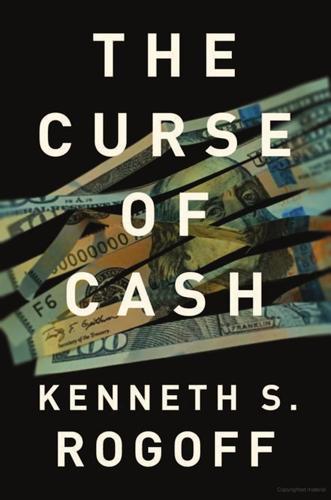
The Curse of Cash
by
Kenneth S Rogoff
Published 29 Aug 2016
The third reason the zero bound has been so problematic is that real interest rates have trended down dramatically, falling below zero at very short horizons, and roughly 1.5% at very long horizons, both well below more “normal” levels. The reasons real interest rates have fallen are many, but some of the main factors include high savings from fast-growing emerging markets and aging populations in advanced economies, factors that in 2005 Ben Bernanke famously pointed to in describing the “global savings glut.”2 Since 2008, intense post–financial crisis regulation and risk aversion have also pushed real interest rates down.3 Another important factor is slower growth. Some economists, such as Northwestern University’s Robert J. Gordon, argue that the root cause of post–financial crisis slow global growth is a sharp trend drop in the rate at which productivity is increasing, due above all to a declining rate of economically valuable inventions.
…
Proceedings of the International Cash Conference, September. Frankfurt: Deutsche Bundesbank. Berkes, Enrico, and Samuel H. Williamson. 2015. “Vintage Does Matter: The Impact and Interpretation in the Official Estimates of Post War GDP for the United Kingdom.” Northwestern University (February), Evanston, IL. Bernanke, Ben S. 2005. “The Global Savings Glut and the U.S. Current Account Deficit.” Paper presented at the Sandridge Lecture, Virginia Association of Economists, Richmond, March 10. Bernanke, Ben S., and Mark Gertler. 1999. “Monetary Policy and Asset Price Volatility.” In Federal Reserve Bank of Kansas City Symposium on New Challenges for Monetary Policy, Jackson Hole, WY, August 26–28.
…
See also Bitcoin; cryptocurrencies American Hustle (Russell), 71 Amromin, Gene, 238n22 Andolfatto, David, 213 Antràs, Pol, 236n12 Argentina, 44, 82 Ascaria, Guido, 248n5 Australia, 52, 132 Austria: cash, per capita holdings of, 33; cash used for different kinds of purchases, percentage of, 55–56; coinage debasement in, 20; currency held by consumers in, 51–52; deutsche mark currency demand, as a control for estimating, 45; stamp currency experiment in, 164–65 Automated Clearing House system, 103 Bagehot, Walter, 244n9 Bank Act of 1844 (Peel’s Act), 235n25 Bank of England: inflation target, choice of, 153; interest rate hike prior to 2008, impact of, 177–78; nominal policy interest rates, 2000–2015, 130; notes convertible to specie, early issue of, 26; quantitative easing by, 135–36 Bank of Japan: inflationary expectations, challenges faced in lifting, 124; inflation target, choice of, 153; January 2016 policy of, 250n5; museum of, understanding coinage debasement in, 20; negative interest rates, experience with, 1, 161; quantitative easing by, 135–36, 143; zero-bound problem of, lack of international coordination regarding, 206 Bartzsch, Nikolaus, 236n23 Baum, Frank (author of The Wonderful Wizard of Oz), 192 Belgium: cash used for different kinds of purchases, percentage of, 55; currency/GDP ratio, 1995, 46–47; restrictions on the use of cash, 64 Bennett, Paul, 237n4 Bernanke, Ben: financial stability, limits to concern regarding, 176; “global savings glut,” 122; “Helicoper Ben,” advice for Japan from, 155; inflation targeting adopted under, 232; macroprudential regulation, argument for, 177; Perry’s attack on, 191; small interest hikes, limited impact of, 177; “taper tantrum” set off by, 126, 141 Billi, Roberto, 229 biometric method for estimating foreign holdings of currency, 43–44 Bitcoin/bitcoins: “Bencoin” as governmental version of, 209–10, 213–14; blockchain technology pioneered by, 112; as a currency, possibility of, 211; as encrypted digital technology, 208; inflation and, 213; market price of, 212; as payment mechanism for criminal activities, 72; security of using, 67 Black, Fischer, 244n5 Blackburn, David, 253n6 Blanchard, Olivier Jean, 248n2, 252n7 blockchain technology, 112, 210, 213–14 border control, issue of, 75–76 Bordo, Michael D., 234n6 Brazil, 65, 183–84, 191, 205 Breaking Bad (TV series), 68, 240n27 Bretton Woods regime, 30 bribes, 70 Britain.
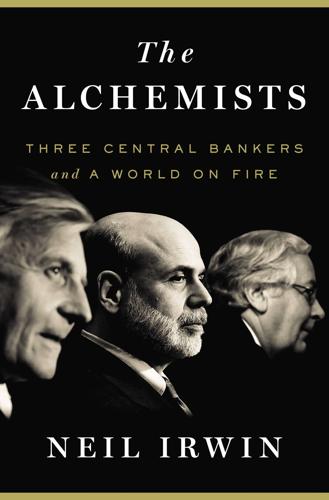
The Alchemists: Three Central Bankers and a World on Fire
by
Neil Irwin
Published 4 Apr 2013
By 2005: Federal Reserve Statistical Release, accession number Z.1.B.100.eB.100, http://federalreserve.gov/releases/z1/; Bureau of Economic Analysis, “Gross Domestic Product,” http://bea.gov/national/index.htm#gdp. In Spain, for example: Ricardo Gimeno and Carmen Martinez-Carrascal, “The Interaction between House Prices and Loans for House Purchase: The Spanish Case,” working paper, Banco de España, 2006, http://ideas.repec.org/p/bde/wpaper/0605.html. “global savings glut”: Ben Bernanke, “The Global Saving Glut and the U.S. Current Account Deficit,” remarks, Sandbridge Lecture, Virginia Association of Economists, Richmond, VA, March 10, 2005. In the United States alone: SIFMA database (U.S. corporate issuance data), http://www.sifma.org/research/statistics.aspx. There were, by 2007, $202 trillion in financial assets on earth: Charles Roxburgh, Susan Lund, and John Piotrowski, Mapping Global Capital Markets 2011, McKinsey Global Institute, August 2011, 2, http://www.mckinsey.com/.
…
Germany, with its saving-oriented populace, had so much money filling its banks that they had to find other places to put their money. With the baby boomers in the world’s advanced economies in their peak earning years, pension funds were desperate for places to park cash, too. In 2005, Ben Bernanke, then a Federal Reserve governor, called all of this extra cash the “global savings glut.” Because there was so much of it, there were more people looking for safe, secure places to put money than there were safe, secure places to put it. Capitalism is a powerful force for creating that which is in demand—even something as intangible and elusive as a safe investment. To try to meet the demand for reliable places to park cash—and to make a great deal of money for itself along the way—the finance industry more or less conjured them out of thin air.
…
That represents an extra $42 trillion in paper wealth over what would have existed had the ratio stayed constant. Global megabanks, hedge funds, insurance companies, and countless other financial firms were links in the chain that connected borrowers taking on ever larger amounts of debt with the global savings glut. And in Jackson Hole in 2005, almost no one seemed to understand just how weak that link was. But what did they understand? What did central bankers know about what was out of whack in the world economy? And when did they know it? On both sides of the Atlantic, central bankers had been fretting about the run-up in housing prices, even if they weren’t quite sure what to do about it.
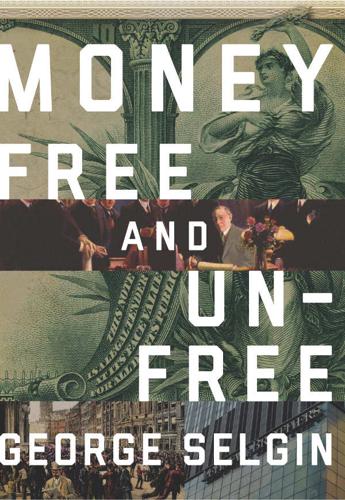
Money Free and Unfree
by
George A. Selgin
Published 14 Jun 2017
According to them—and to Alan Greenspan and Ben Bernanke especially—low mortgage rates at that time were due to a “global saving glut” over which the Fed had no control. Though it initially commanded some assent beyond the Fed, the savings glut hypothesis has since been subject to withering criticism. Among various counterarguments, perhaps the most fundamental is offered by Giancarlo Bertocco (2012), who points out that, in a monetary (as opposed to barter) context, the global savings glut hypothesis isn’t an alternative to the domestic monetary policy hypothesis at all (see also Borio and Disyatat 2011).
…
Lecture series, George Washington University School of Business, Washington (March 20, 22, 27, 29). ——— (2012b) “Some Reflections on the Crisis and the Policy Response.” Speech at the Conference on “Rethinking Finance,” Russell Sage Foundation and the Century Foundation, New York (April 13). Bertocco, G. (2012) “Global Saving Glut and Housing Bubble: A Critical Analysis.” Focaltà di Economia, Università dell’Insubria, Varese, Italy. Bindseil, U., and Würtz, F. (2007) “Open Market Operations: Their Role and Specification Today.” In D. G. Myers and J. Toporowski (eds.), Open Market Operations and Financial Markets, 54–79.
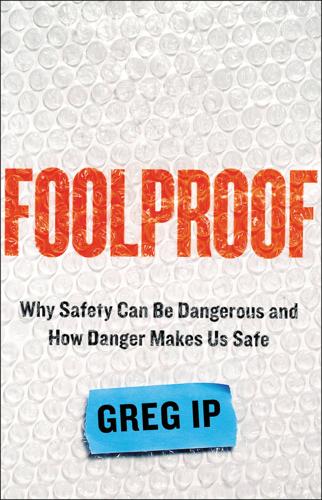
Foolproof: Why Safety Can Be Dangerous and How Danger Makes Us Safe
by
Greg Ip
Published 12 Oct 2015
This meant that even as the United States was borrowing staggering sums from the rest of the world, its long-term bond and mortgage rates remained strangely low, fueling the housing boom. Alan Greenspan called this a conundrum. His fellow governor, Ben Bernanke, had a different explanation: it was the “global saving glut.” He noted that the low mortgage rates made possible by the influx of foreign savings had spurred home construction and home prices, though he didn’t spot the crisis that would result. The global saving glut is probably the least appreciated contributor to the financial crisis of 2008, and the least corrected. True, Americans curbed their appetite for borrowing, and China also embarked on an investment boom that soaked up some of its extra savings.
…
Over Economic Criticism,” Dow Jones, October 31, 2013. 24 The head of the IMF repeatedly: Michel Camdessus, managing director of the IMF, recalls issuing the warning, in an interview with BusinessWeek in December 2007, cited in “The IMF Crisis,” Wall Street Journal, April 15, 1998. 25 Many of these conditions had: Independent Evaluation Office, “The IMF and Recent Capital Account Crises: Indonesia, Korea, Brazil” (Washington: International Monetary Fund, 2003): 48. 26 His fellow governor: Ben Bernanke, “The Global Saving Glut and the U.S. Current Account Deficit,” March 10, 2005, available at http://www.federalreserve.gov/boarddocs/speeches/2005/200503102/. Chapter 6 1 Sandy “brought the stakes”: Michael R. Bloomberg, “A Vote for a President to Lead on Climate Change,” Bloomberg, November 1, 2012. 2 two-thirds of voters: Thomas Kaplan, “Most New Yorkers Think Climate Change Caused Hurricane, Poll Finds,” New York Times, December 4, 2012. 3 But climate change could not: New York City’s post-Sandy report notes that Sandy was no longer a hurricane when it hit.
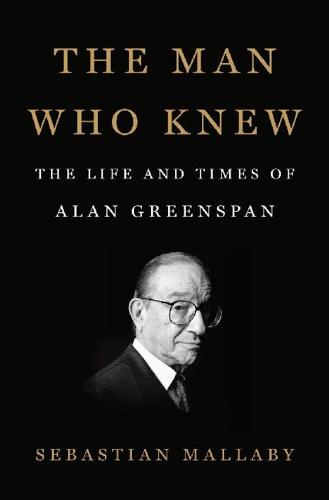
The Man Who Knew: The Life and Times of Alan Greenspan
by
Sebastian Mallaby
Published 10 Oct 2016
Inflation expectations had certainly not fallen dramatically enough to provide an explanation. Nor were investors expecting a weak economy. Greenspan even doubted the leading theory among his colleagues.54 During an FOMC meeting two months earlier, Ben Bernanke had pointed to a “savings glut.” Long-term loans were cheap because capital was in plentiful supply, Bernanke had observed. Savings were flooding into the United States from China and other countries. The savings-glut theory was more plausible than Greenspan acknowledged, and later he would come around to it. China, like other emerging economies, was buying up long-term bonds issued by the U.S. government and other Western powers, helping to explain why long-term rates were low—including rates on long-term mortgages.
…
In some smaller European economies, notably Spain, the housing bubble was the result of the new common currency, the euro, which had brought about a collapse in borrowing costs. Elsewhere the bubble reflected the policies of central banks that shared the Fed’s inflation-targeting mind-set: Britain was a good example. But the chief omission in the savings-glut theory was the Western financial system itself. In the United States especially, but also in Europe, the cause of the housing bubble was not simply a general surfeit of savings. It was that banks and various species of investment fund were scooping up those savings and pumping them into real estate.
…
Contrary to Greenspan’s claims on NPR, moreover, there was no reason to suppose that monetary policy had to be either impotent or lethal: the Fed could have steered a middle course simply by abandoning forward guidance and “measured” gradualism.22 Anna Schwartz, the coauthor, with Milton Friedman, of the magisterial Monetary History, skewered Greenspan on this point. “There never would have been a sub-prime mortgage crisis if the Fed had been alert,” she charged. “Monetary policy was too accommodative. Rates of 1 percent were bound to encourage all kinds of risky behavior.” The contention that the mortgage bubble reflected a global savings glut did not impress Schwartz in the least. “The Fed failed to confront something that was evident. It can’t be blamed on global events,” she concluded.23 Even though Greenspan’s monetary policy was vulnerable to attack, the majority of his critics focused instead on his regulatory policy. Aside from a few mavericks such as Schwartz and Stanford’s John Taylor, not many people wanted to denounce Greenspan for setting interest rates too low—after all, he had delivered broadly on-target inflation and strong growth, the opposite of stagflation.
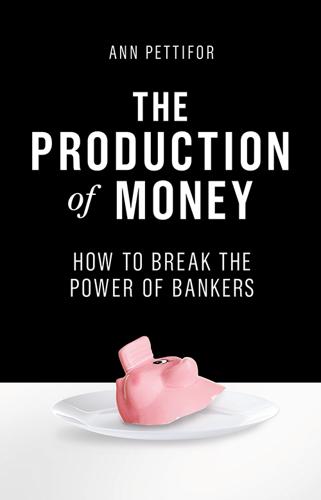
The Production of Money: How to Break the Power of Banks
by
Ann Pettifor
Published 27 Mar 2017
So it is with unmanaged and unregulated credit creation; the result leads invariably to excessive credit creation, the inflation of assets, prices or wages, the build-up of unpayable debts, and then catastrophic failure of the financial system as debts are defaulted upon. The 2006–07 sub-prime mortgage crisis in the US – when impoverished debtors defaulted on large sums of debt charged at high rates of interest – is a textbook example of how a system based on ‘classical’ monetary theory works. Economists reckoned that an excess supply of money (‘the global savings glut’) had, thanks to market forces, lowered the ‘price’ (interest rate) of money. Because of their conviction that bankers as dealers in money were like other intermediaries, simply acting as agents between buyers and sellers, economists thought banking activities could safely be guided by the ‘invisible hand’ of the market.
…
In The General Theory he finally understood that the critical point of departure of any such theory from the classical theory was the long-term rate of interest: the rate that underpinned all private activity, especially investment. Whatever the precise formulation, in the classical theory the rate of interest is a passive consequence of whatever real events are regarded as dictating outcomes. Today the most prominent of these events is defined as ‘a global savings glut’, changes in population growth, and failing productivity. In Keynes’s theory it is the rate of interest that dictates events and that, unchecked, is the ‘villain of the economic piece’. Unchecked, high rates of interest vindicate two millennia of condemnation of usury in both philosophical and religious doctrines.
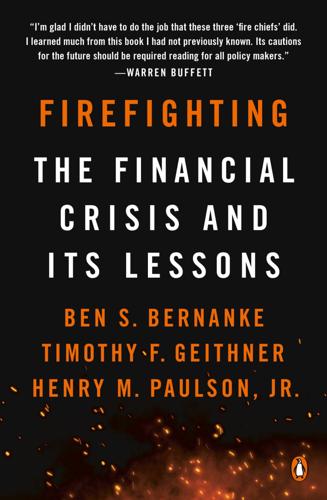
Firefighting
by
Ben S. Bernanke
,
Timothy F. Geithner
and
Henry M. Paulson, Jr.
Published 16 Apr 2019
A tidal wave of foreign money was pouring into the United States, as global investors frustrated by low interest rates and scarce investment opportunities at home looked abroad for better and safer yields. Ben called this seemingly insatiable demand for assets that generated decent returns a “global savings glut,” and it created a lot of dry tinder. The greatest part of the credit boom took place in the U.S. mortgage market. Mortgage debt per U.S. household soared 63 percent from 2001 to 2007, much faster than household incomes. Some of this new debt was beneficial, helping people buy homes or take cash out of their homes for worthy purposes.
…
and arsenal for dealing with future crises, 118, 120 background, 13 and Bear Stearns rescue, 48, 50–51, 54 and Countrywide sale, 39 and early stages of financial crises, 33 and expansion of emergency authorities, 80–81 “Geithner put” condition, 101 and Lehman failure, 63, 65, 66, 67 and merger efforts, 77 and onset of financial crisis, 1, 30–31 and policy responses to crisis, 96, 97–101, 105, 106–7 and post-crisis reforms, 112, 116 and shortcomings of U.S. regulatory regime, 28 and spark of crisis, 16 and TARP, 93 and Term Securities Lending Facility, 44 and theoretical approaches to financial crises, 35 General Electric, 69 General Motors, 95, 97, 105, 208 Glass-Steagall Act, 115 global impact of financial crisis, 16, 129, 195–98 “global savings glut,” 16 GMAC, 22, 102, 180, 208 Goldman Sachs and Bear Stearns rescue, 51, 53 collateral Treasuries held by, 20–21 and expansion of crisis, 75, 77–78, 157 government investment in, 176 and Lehman failure, 64, 69 and merger efforts, 77 and Paulson’s background, 13 private capital raised during crisis, 175, 181 Goldstone, Larry, 44 Gorton, Gary, 31 Government Accountability Office (GAO), 115 government-sponsored enterprises (GSEs) and acceleration of crisis, 23 and Fannie Mae/Freddie Mac conservatorship, 56–57 and migration of risk outside regulatory system, 150 and onset of financial crisis, 155, 156 and recovery from crisis, 210 refinancing and loan modification programs, 194 and shortcomings of U.S. regulatory regime, 27–28 and taxpayer profit from rescue, 208 See also Fannie Mae; Freddie Mac Gramm-Leach-Bliley Act, 27 Great Depression Bernanke’s scholarship on, 13, 109 and federal intervention in financial system, 60 and Fed policies, 35 financial crisis compared to, 1, 5–6, 110, 200 and history of financial crises, 33 and model for stress tests, 101, 180 and small bank failures, 115 and U.S. regulatory regime, 29–30 “Great Moderation,” 146 guarantee programs, 164 “haircuts,” 74, 81–82, 87–88, 90, 93, 100, 127 hedge funds, 13, 31, 63, 71 herd mentality, 15–16, 117 Hiring Incentives to Restore Employment Act, 187 history of prior financial crises, 11–12 Home Affordable Modification Program (HAMP), 105–6, 163, 190, 192, 194 Home Affordable Refinance Program (HARP), 105–6, 163, 190, 193, 194 Hope Now, 190, 194 House Financial Services Committee, 54 household debt levels, 16 household wealth, 200, 216n Housing and Economic Recovery Act, 58–59, 185 housing market and causes of financial crisis, 4 and Fannie Mae/Freddie Mac conservatorship, 54–60 and fiscal stimulus efforts, 103 homeowner relief efforts, 80, 92, 97, 107 home ownership ideal, 29 home prices, 4, 108, 148, 154, 190, 200, 204, 216n and legacy of financial crisis, 123 and onset of financial crisis, 30 and policy responses to crisis, 105, 161, 189–94 and post-crisis reforms, 112 and resolution of financial crisis, 110 and spark of crisis, 18 See also mortgage market hyperinflation, 6, 109 income inequality, 12, 125, 143 IndyMac Bank, 54, 69, 71, 81, 190 inflation, 35–36, 147 insurance and acceleration of crisis, 22 and AIG rescue, 71, 72 and expansion of crisis, 76, 77 insured deposits, 22–23 and Lehman failure, 69 and models for future crisis management, 127 and TARP, 102 See also Federal Deposit Insurance Corporation (FDIC) interbank lending, 84–85 interest rates coordinated interest rate cuts, 197 and legacy of financial crisis, 123–24 long-term trends, 147 and policy responses to crisis, 97, 105–6, 163 and role of central banks, 34 and stimulus programs, 43 and vulnerability of financial system, 14 International Monetary Fund (IMF), 102, 198 investment banks, 4, 22, 47–48, 69, 77 It’s a Wonderful Life (film), 14 James, Bill, 76 JPMorgan Chase and Bear Stearns rescue, 49–50, 53–54 and expansion of crisis, 47 and expansion of emergency authorities, 81 government investment in, 176 and Lehman failure, 62 and onset of financial crisis, 155 and post-crisis reforms, 115 private capital raised during crisis, 175, 181 Keynesian stimulus, 44, 111–12, 123 Kindleberger, Charles, 11–12 King, Mervyn, 35, 89 labor force, 12, 141, 142 Lacker, Jeffrey, 36 Latin American debt crisis, 37 layoffs, 95, 108 Lazear, Edward, 70 Lehman Brothers and acceleration of crisis, 22 Archstone-Smith acquisition, 40 and arsenal for dealing with future crises, 121 and Bear Stearns rescue, 47–48, 51, 53 and causes of financial crisis, 4 and expansion of crisis, 75, 157 failure and rescue efforts, 61–62, 62–71 and Fannie Mae/Freddie Mac conservatorship, 60 management firings, 73 and policy responses to crisis, 168, 169, 176 and politics of crisis management, 9 and post-crisis reforms, 115 and spark of crisis, 18 lending practices, 17, 29, 40, 56 Lenin, Vladimir, 5 leverage and acceleration of crisis, 20–25 and Bear Stearns rescue, 47 and causes of financial crisis, 3 and current state of financial system, 6, 7 and Lehman failure, 63 and politics of crisis management, 126–27 and post-crisis reforms, 112, 117–18 and prevention of financial crises, 110–11 and recovery from crisis, 210 and roots of financial crisis, 12 and shortcomings of U.S. regulatory regime, 25–26, 28–29 and spark of crisis, 16, 19 “liar” loans, 17 Libor-OIS spread, 153, 155, 201 liquidity and Bear Stearns rescue, 48, 53 and Countrywide sale, 38–39 and current state of financial system, 6 and expansion of crisis, 75, 76, 158 Fed programs promoting, 42 and Lehman failure, 69 and onset of financial crisis, 32 and overleverage in financial system, 21 and policy responses to crisis, 161, 164, 166 and post-crisis reforms, 112–13 and recovery from crisis, 202 and regulation shortcomings, 26 and roots of financial crisis, 13 and TARP, 87, 90 and Term Securities Lending Facility, 44–45 and theoretical approaches to financial crises, 35, 36–37 loan loss rates, 145 loan modification programs, 105–7, 192, 193, 194 loan originators, 17–18 loan-servicing industry, 106 lobbying, 27 local budgets, 188 Lombard Street (Bagehot), 34 Long-Term Capital Management, 13, 40, 64 low-income borrowers, 17 Mack, John, 77 Maiden Lane, 50, 179, 208, 217n manias, 111, 112 margin requirements, 4, 22, 114, 126 maturity transformation, 14, 16, 23, 117 McCain, John, 80, 82 McCarthy, Callum, 67 McConnell, Meg, 118 media coverage of financial crisis, 65, 98 memory of financial crises, 3, 4, 125–26 mergers, 67, 77, 114 Merrill Lynch and Bear Stearns rescue, 51, 53 and causes of financial crisis, 4 and expansion of crisis, 75, 157 and foreign investment, 41 government investment in, 176 and instability of financial system, 84 and Lehman failure, 61, 64, 66–67 management firings, 73 and post-crisis reforms, 115 private capital raised during crisis, 175, 181 and TARP, 95, 96 and write-down of troubled assets, 40–41 Mexico, 37 middle-class insecurity, 125 Middle-Class Tax Relief and Job Creation Act, 187 Minsky, Hyman, 13 Mitsubishi, 78 monetary policy and legacy of financial crisis, 123–24 and onset of financial crisis, 43–44 and policy responses to crisis, 161, 163, 183–88 and prevention of financial crises, 111–12 and TARP, 89 money market funds and acceleration of crisis, 22 and expansion of crisis, 76–77 and migration of risk outside regulatory system, 150 and policy responses to crisis, 163, 171 and stress tests, 102 and TARP, 87 and taxpayer profit from rescue, 208 monoline insurers, 44 moral hazard and AIG rescue, 74 and Bear Stearns rescue, 51, 52 and current state of financial system, 8 and early stages of financial crises, 33 and Fannie Mae/Freddie Mac conservatorship, 56 and Federal Deposit Insurance Corporation (FDIC) Deposit Insurance Fund, 81–82 and shortcomings of U.S. regulatory regime, 28 and theoretical approaches to financial crises, 36, 37–38 Morgan Stanley and Bear Stearns rescue, 51, 53 credit default swaps, 75 and expansion of crisis, 77, 78, 157 and Fannie Mae/Freddie Mac conservatorship, 59 and foreign investment, 41 government investment in, 176 and Lehman failure, 64, 69 and onset of financial crisis, 156 private capital raised during crisis, 175, 181 mortgage-backed securities (MBS) and causes of financial crisis, 4 and legacy of financial crisis, 123 and policy responses to crisis, 106, 163, 190, 191 and roots of financial crisis, 12 and spark of crisis, 17 mortgage market and Bear Stearns rescue, 53 and causes of financial crisis, 3–4 and Fannie Mae/Freddie Mac conservatorship, 55–60 and instability of financial system, 85 loan modification programs, 105–7, 192, 193, 194 and long-term interest rates, 147 mortgage-related assets, 21 and policy responses to crisis, 103–7, 169, 189–94 and quantitative easing, 103–4 and recovery from crisis, 203 and shortcomings of U.S. regulatory regime, 27, 29 and spark of crisis, 16–20 See also housing market; mortgage-backed securities Mozilo, Angelo, 38–39 National Bureau of Economic Research, 43 nationalization of financial institutions, 54–60, 86, 91, 98, 100, 107, 182 negotiation of relief efforts, 65 Nevada housing market, 19 New York Fed, 26, 28, 64, 66, 118 New York Times, 70 “NINJA” loans, 17 no-documentation loans, 29 nonbanks and acceleration of crisis, 22–24 and AIG rescue, 72 and arsenal for dealing with future crises, 118–20 and bank holding companies, 216n and Bear Stearns rescue, 47, 48–50, 52, 53–54 and Countrywide sale, 39 and expansion of crisis, 76 and Lehman failure, 61, 63 and migration of risk outside regulatory system, 150 and policy responses to crisis, 162, 173 and post-crisis reforms, 113–14, 115 and shortcomings of U.S. regulatory regime, 26–27, 211 and Term Securities Lending Facility, 44–45 See also specific institutions Northern Rock, 155 Obama, Barack and arsenal for dealing with future crises, 120, 124 election, 93 and government response to crisis, 80, 82, 93, 103–7 and legacy of financial crisis, 124 and onset of financial crisis, 1 and policy responses to crisis, 163 and politics of crisis management, 9 and post-crisis reforms, 113 and TARP, 96–98, 100, 105, 107 Office of the Comptroller of the Currency (OCC), 23, 59 Office of Thrift Supervision (OTS), 23, 71, 116 optimism, 18, 117 “orderly liquidation authority,” 121 “originate-to-distribute” mortgage model, 17–18 overconfidence, 12–13, 125–26 overnight funding, 24 panics and Bear Stearns rescue, 49 causes of, 3 contagion effect of, 37, 111 inherent vulnerability to, 13–16 and Lehman failure, 70 and onset of financial crisis, 2, 31–32 and post-crisis reforms, 112 and prevention of financial crises, 111 and TARP, 87 and toxic mortgage assets, 41 Paulson, Henry M., Jr.

The Color of Money: Black Banks and the Racial Wealth Gap
by
Mehrsa Baradaran
Published 14 Sep 2017
Wallison, “The True Origins of This Financial Crisis," American Spectator, February 6, 2009, http://spectator.org/42211_true-origins-financial-crisis. 71. Jason Szep, “Activists Challenge Lenders in Mortgage Crisis," Reuters, March 19, 2007. 72. Hanwen Fan, Qiao Yu, and Xun Wu, “Global Saving Glut, Monetary Policy, and Housing Bubble: Further Evidence," Brookings Institution, July 10, 2015, https://www.brookings.edu/research/global-saving-glut-monetary-policy -and-housing-bubble-further-evidence/; Financial Services Authority, The Turner Review: A Regulatory Response to the Global Banking Crisis (London: Financial Services Authority, 2009), http://www.fsa.gov.uk/pubs/other/turner _review.pdf. 73.
…
Wall Street banks had previously stayed away from this market because there was no profit in it, but they became hungry for subprime loans once they became profitable. The story of the MBS and the transformation of the mortgage market has already been discussed in Chapter 7, but in the years preceding the crisis, the subprime market began overheating due to increased demand for investments by what economists have labeled a “savings glut." Foreign investors flooded U.S. markets with money. This oversupply of cheap cash lowered U.S. treasury note yields, and so the money flowed into the next safest investment— asset-backed securities, or home mortgages. The financial sector met the demand by selling, bundling, insuring, and creating new “structured products,” and then originating more mortgage loans.
…
Jr., 79, 80 Rockefeller, Nelson, 180, 197 Roeser, Rom, 180-181 Romney, George, 167-170 Romney, Mitt, 255 Roosevelt, Franklin D., 101, 127 Roosevelt, Theodore, 63 Rosenbloom, Richard, 183 Rumsfeld, Donald, 167, 181 Runs, on banks, 88 Rustin, Bayard, 137-138, 143 Sagarin, Edward, 30 St. Charles Street AME Church, 271-273 St. Louis World’s Fair (1904), 303n123 St. Luke Penny Savings Bank, 43-44 Samuels, Howard J., 148, 323n68 Sanders, Cheryl J., 272 Sandoval, Hilary, 225 Santelli, Rick, 256 Satter, Beryl, 314nn29,41 Saunders, Kim, 266 Savings banks, 23-24, 26 Savings glut, 257-258 Scarcity, psychological effects of, 251-252 Scott, Walter, 262 Seale, Bobby, 189 Securities, 203, 204, 243, 244-245, 333n182 Segregation: impact of, on black banking, 4-6; de Tocqueville on, 11; bank failures and, 45-46, 87; in North, 69-71, 137, 288n9; and black nationalism, 81-83; impact of, on housing prices, 90-93, 308-309n110; inability to multiply money due to, 93-97; in housing, 105-106, 107-110, 218-219, 310nn123-125; of immigrant groups, 126; of black banks and businesses, 129; in communist propaganda, 131-132; King on, 140; and creation of ghettos, 156; and black poverty, 171; as homicide predictor, 217; in Ferguson and Baltimore, 248-249; continuation of, 254-255; and impact of 2008 economic downturn, 255; and reparations program, 282-283; measuring extent of, 317n104.
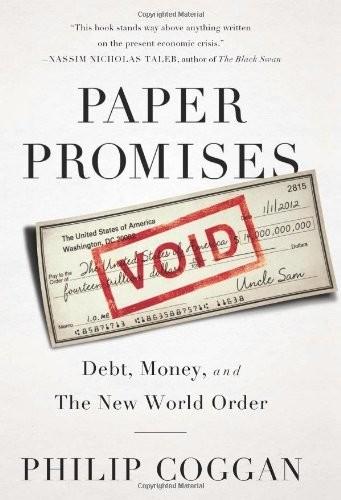
Paper Promises
by
Philip Coggan
Published 1 Dec 2011
The corollary of this policy was that they accumulated a massive current-account surplus which (being China) the government controlled. These foreign-exchange reserves were then held in Treasury bonds and bills, making it easier for the US to finance its trade deficit. In his book Fixing Global Finance, Financial Times columnist Martin Wolf argues convincingly that the ‘savings glut’ of China and others was more responsible for the imbalance than American profligacy. 3 His argument is that a low level of real interest rates indicated an excess of desired saving over investment. The Chinese (ironically for a communist state) did not provide much in the way of pensions, so their citizens saved to cover their old age; the Japanese had little desire to spend or invest because of their sluggish economy.
…
Those reserves were invested in developed-world government bonds (mostly US Treasury bills). The system had thus created a very wealthy group of investors who were effectively uninterested in the price of, and return from, their investments. The bond-market vigilantes had been swamped. There was a savings glut that forced up asset prices. The result was an odd system that seemed to suit both sides. The Chinese had a flourishing export market; the Americans were able to fund their consumption at low cost. There were occasional grumbles. American politicians feared that the Chinese were stealing US manufacturing jobs; the Chinese occasionally lectured the Americans on the need to safeguard the value of the Treasury bond market.
…
leverage leveraged buyout Lewis, Michael Liberal Democrat party (UK) Liberal Party (UK) life expectancy life-cycle theory Little Dorrit lire Live 8 concert Lloyd George, David Lombard Odier Lombard Street Research London School of Economics Long Term Capital Management longevity Louis XIV, King of France Louis XV, King of France Louvre accord Lucas, Robert Lucullus, Roman general Luxembourg Macaulay, Thomas McCarthy, Cormac Macdonald, James MacDonald, Ramsay McKinsey McNamara, Robert Madoff, Bernie Malthusian trap Mandelson, Peter Marais, Matthieu Marco Polo Mares, Arnaud Marks & Spencer Marshall, George Marshall Aid Marshalsea Prison Mauro, Paolo May, Sir George means/media of exchange Medicaid Medicare Mellon, Andrew mercantilism Merchant of Venice, The Meriwether, John Merkel, Angela Merton, Robert Mexico Mill, John Stuart Milne-Bailey, Walter Minsky, Hyman Mises, Ludwig von Mississippi Project Mitterrand, Francois Mobutu, Joseph Mongols monetarism monetary policy monetary targets money markets money supply Moody’s Moore’s Law moral hazard Morgan Stanley Morgenthau, Henry Morrison, Herbert mortgages mortgage-backed bonds Multilateral Debt Relief Initiative Napier, Russell Napoleon, emperor of France Napoleonic Wars Nasser, president of Egypt National Association of Home Builders National Association of Realtors National Association of Security Dealers Netherlands New Century New Hampshire New Jersey Newton, Sir Isaac New York Times New Zealand Nixon, Richard Norman, Montagu North Carolina Northern Ireland Northern Rock North Korea North Rhine Westphalia, Germany Norway Obama, Barack odious debt Odysseus OECD d’Orléans, duc Ottoman Empire output gap Overstone, Lord overvalued currency owner-equivalent rent Papandreou, George paper money paradox of thrift Paris club Passfield, Lord (Sidney Webb) Paulson, Hank pawnbroking pension age pension funds pensions Pepin the Short Perot, Ross Perry, Rick Persians Peter Pan Philip II, King of Spain Philip IV, King of France PIGS countries PIMCO Plaza accord Poland Ponzi, Charles Ponzi scheme population growth populism portfolio insurance Portugal pound Prasad, Eswar precious metals Price-earnings ratio primary surplus Prince, Chuck principal-agent problem printing money private equity property market protectionism Protestant work ethic public choice theory public-sector workers purchasing power parity pyramid schemes Quaintance, Lee quantitative easing (QE) Quincy, Josiah railway mania Rajan, Raghuram Rand, Ayn Reagan, Ronald real bills theory real interest rates Record, Neil Reformation, the Reichsbank Reichsmark Reid, Jim Reinhart, Carmen renminbi Rentenmark rentiers reparations Republican Party reserve currency retail price index retirement revaluation Revolutionary War Ridley, Matt Roberts, Russell Rogoff, Kenneth Romanovs Roosevelt, Franklin D. Rubin, Robert Rueff, Jacques Rumsfeld, Donald Russia Sack, Alexander St Augustine Saint-Simon, duc de Salamis (city) Santelli, Rick Sarkozy, Nicholas Saudi Arabia savings savings glut Sbrancia, Belen Schacht, Hjalmar Scholes, Myron shale gas Second Bank of the United States Second World War Securities and Exchange Commission seignorage Shakespeare, William share options Shiller, Robert short-selling silver Singapore Sloan, Alfred Smith, Adam Smith, Fred Smithers & Co Smithsonian agreement Snowden, Philip Socialist Party of Greece social security Société Générale solidus Solon of Athens Soros, George sound money South Africa South Korea South Sea bubble sovereign debt crisis Soviet Union Spain special drawing right speculation, speculators Stability and Growth pact stagnation Standard & Poor’s sterling Stewart, Jimmy Stiglitz, Joseph stock markets stop-go cycle store of value Strauss-Kahn, Dominque Strong, Benjamin sub-prime lending Suez canal crisis Suharto, President of Indonesia Sumerians supply-side reforms Supreme Court (US) Sutton, Willie Sweden Swiss franc Swiss National Bank Switzerland Sylla, Richard Taiwan Taleb, Nassim Nicholas taxpayers Taylor, John tea party (US) Temin, Peter Thackeray, William Makepeace Thailand Thatcher, Margaret third world debt crisis Tiernan, Tommy Times Square, New York tobacco as currency treasury bills treasury bonds Treaty of Versailles trente glorieuses Triana, Pablo Triffin, Robert Triffin dilemma ‘trilemma’ of currency policy Truck Act True Finn party Truman, Harry S tulip mania Turkey Turner, Adair Twain, Mark unit of account usury value-at-risk (VAR) Vanguard Vanity Fair Venice Vietnam War vigilantes, bond market Viniar, David Volcker, Paul Voltaire Wagner, Adolph Wall Street Wall Street Crash of 1929 Wal-Mart wampum Warburton, Peter Warren, George Washington consensus Weatherstone, Dennis Weimar inflation Weimar Republic Weinberg, Sidney West Germany whales’ teeth White, Harry Dexter William of Orange Wilson, Harold Wirtschaftswunder Wizard of Oz, The Wolf, Martin Women Empowering Women Woodward, Bob Woolley, Paul World Bank Wriston, Walter Xinhua agency Yale University yen yield on debt yield on shares Zambia zero interest rates Zimbabwe Zoellick, Robert Philip Coggan is the Buttonwood columnist of the Economist.

Unfinished Business
by
Tamim Bayoumi
The US boom was accompanied by a gradual fall in long-term interest rates whose cause is less clear than the European Monetary Union-induced reduction in the Euro area periphery. Three main hypotheses have been put forward to explain the fall in US yields. The first is that it reflected the inflows into US Treasury and Agency assets coming from the build-up in reserves in emerging markets, including China—often referred to as the “global saving glut”.36 The second is that financial inflows from European banks lowered rates.37 The final explanation is that the rise in repos led to a reduction in yields as mortgage-backed assets became more liquid.38 Each explanation highlights a different potential driver, self-insurance by emerging markets, financial deregulation in Europe, and the widening of repo collateral in the United States.
…
The first is that it reflected the inflows into US Treasury and Agency assets coming from the build-up in reserves in emerging markets, including China—often referred to as the “global saving glut”.36 The second is that financial inflows from European banks lowered rates.37 The final explanation is that the rise in repos led to a reduction in yields as mortgage-backed assets became more liquid.38 Each explanation highlights a different potential driver, self-insurance by emerging markets, financial deregulation in Europe, and the widening of repo collateral in the United States. The evidence suggests that all three drivers mattered. Figure 39 provides a sense of the relative importance of these three explanations by comparing the amount of money that was pumped into US markets from each source. For the global saving glut, the chart shows the increase in reserve holdings as a proportion of US output.39 Holdings rose by some 8 percent of US output between 1999 and 2007 (unlike the other explanations, this flow accelerated after the crisis). For European bank inflows, the chart shows the increase in net ownership of US assets by core Euro area and UK banks, which start at a very similar level to reserves but rise twice as fast through 2006.40 Even accepting that capital gains may have played a part in the increase in European bank assets and that not all of these inflows went into the US housing market, it is clear that such inflows played an important role in easing US financial conditions, as it also did in the Euro area periphery.
…
Green (eds), International Monetary Cooperation: Lessons from the Plaza Accord after Thirty Years, Peterson Institute for International Economics, Washington DC, 2016. Bernanke (2004): Ben S. Bernanke, “The Great Moderation”, speech given at the meetings of the Eastern Economic Association, Washington DC, February 20, 2004. Bernanke (2005): Ben S. Bernanke, “The Global Saving Glut and the U.S. Current Account Deficit”, speech given at the Homer Jones Lecture, St. Louis, Missouri, on April 14, 2005. Bernanke (2015): Ben S. Bernanke, The Courage to Act, W. W. Norton Press, New York and London, 2015. Beyer and Smets (2015): Robert C. M. Beyer and Frank Smets, “Labour Market Adjustments in Europe and the US: How Different?”

Models. Behaving. Badly.: Why Confusing Illusion With Reality Can Lead to Disaster, on Wall Street and in Life
by
Emanuel Derman
Published 13 Oct 2011
Models are inadequate. INADEQUATE KNOWLEDGE When we truly understand an occurrence, we have adequate knowledge of it; when we don’t, when we are unable to explain an occurrence in generality, we have inadequate knowledge. For example: The financial crisis of 2007-2008 was caused by the global savings glut. What caused that? The Asian currency crisis of 1997-1998: Asian countries came out of that wanting to run net surpluses rather than net deficits. But what caused that? . . . Each explanation, reasonable though it sounds, provokes a request for another. Each explanation is inadequate and local because it displaces the ultimate cause one degree further from the final effect.
…
In the long run, of course, paper money is very risky; governments collapse, countries disappear, empires fall, and things hold their value much better than paper does. James Grant, the editor of Grant’s Interest Rate Observer, has pointed out that an ounce of gold has always more or less been the price of a good men’s suit. 4. According to Krugman and Wells, the crisis of 2007–2008 was caused by the global savings glut (www.nybooks.com/articles/archives/2010/sep/30/ slump-goes-why/). That was caused by the Asian currency crisis of 1997– 1998, which stimulated Asian countries to avoid a repeat by running net surpluses rather than net deficits. But what caused the Asian currency crisis? And what caused whatever caused that?
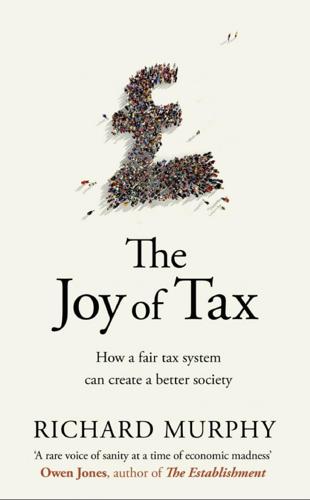
The Joy of Tax
by
Richard Murphy
Published 30 Sep 2015
If, therefore, there are willing buyers for its debt (and this has been the uninterrupted case in the UK since 169417), running a deficit (or reclaiming less tax from the economy than you spend) is simply not a problem for a government. You would think that missing this fact would be a cardinal sin for any economist, let alone politician, and yet it is the norm. Of course this situation of being able to run deficits would change if a time came when a government could not sell its debt, but, given that there is a savings glut in the world at present and a shortage of secure assets in which to invest, the prospect of the government being unable to sell its debt seems very unlikely for a long time to come. So, it seems that the glaringly obvious has to be spelled out once again: there is no reason why any government should have to balance its books unless it really wants to do so as a matter of policy – which would only be wise if that economy was booming (as it was, for example, in the period 1997 to 2001), and the government wanted as a result to temporarily withdraw cash from the economy by underspending, and thus calm down over-activity to prevent an unsustainable boom.
…
So how does the tax system create work beyond those 55,000 or so people currently employed by HMRC? As already noted, right now it does not. Because national insurance charges employers tax for having employees it does the exact opposite of what is intended in this regard. Perversely, and at a time when there is a savings glut in the world2 and there is no need whatsoever to encourage yet more money to be put aside in the economy for no productive purpose (because the level of investment is in no way dependent upon the level of savings in an economy, as the discussion in Chapter 4 on the way money is created has shown), the net effect of this bias is to massively overtax labour, which needs to be put to work on decent wages when too many people in the UK are currently paid too little and too many people have low-productivity jobs.

Never Let a Serious Crisis Go to Waste: How Neoliberalism Survived the Financial Meltdown
by
Philip Mirowski
Published 24 Jun 2013
His book Fault Lines has managed to amalgamate what had by then become the neoliberals’ favorite stories about the crisis into one neat and tidy package. In caricature, it combines: fingering the Asian economies for seeking to accumulate dollar reserves after the Asian crisis of 1997, and therefore creating a world “savings glut”; luxuriant financial innovation (a phenomenon that was “natural”), which lulled bankers and others into taking on “excessive risk”; and technological innovation, which lowered wages and worsened income distribution in the United States, which in turn lured the government to ineptly try to counter it by screwing around with the household mortgage market.
…
Was he not financial manager-in-chief during the late contretemps? The answer to this third, and most troublesome, question is that Bernanke never once in that lecture concedes that the Fed did anything wrong before or after the crisis, and indeed, in a subsequent lecture, attempted to load the blame on China and the “global savings glut” for the entire episode.62 Those “engineers” and “managers” must be slippery, devious fellows indeed, since they are forever undermining the noble economists, without ever once leaving a visible calling card or forwarding address. I have had some economists warn me that of course Bernanke had to say stuff like this: for the sake of political stability, he must hew to the party line in public.
…
Certainly it seems to have fooled at least one journalist who might otherwise been on the lookout for self-serving narratives concerning the crisis.106 Astoundingly, the Journal of Economic Literature, the primary reviews journal of the orthodox economics profession, turned to this particular scofflaw, in preference to literally hundreds of other economists who had written about the crisis, to provide a short syllabus for general economists to “get up to speed” on the crisis. Gorton’s choice of indispensable texts for crisis hermeneutics was so narrow of scope and devoid of curiosity as to be gobsmacking: Ben Bernanke’s testimony before the Federal Crisis Inquiry Commission blaming the whole thing on a spurious “global savings glut”; the Rogoff story that all crises throughout history look alike and involve government overindebtedness;107 the Shiller index on the housing bubble; his own work on repo; some deadly colorless reports from the IMF; and a couple of papers that suggest banks pulled back on their lending in 2008 because they were “constrained” when their own short-term lending dried up.

Slouching Towards Utopia: An Economic History of the Twentieth Century
by
J. Bradford Delong
Published 6 Apr 2020
For China, especially, this became a development strategy: maintain full employment in Shanghai by (indirectly) lending America’s consumers the renminbi they need to keep their purchases up. The result was what future Federal Reserve chair Ben Bernanke called a “global savings glut,” or an excess demand for savings vehicles worldwide.15 This glut threatened to turn the small global economic downturn of 2000–2002 into a big downturn. To fend that off, the number of bonds being issued by businesses needed to be ramped up to satisfy the worldwide demand for savings vehicles. Globally, central banks responded to the savings glut by flooding the world with liquidity—buying bonds for cash and promising to continue such easy money policies in the future.
…
Keynote address to the Center for Research in Security Prices (CRSP) Forum, Gleacher Center, University of Chicago, quoted in John Lippert, “Friedman Would Be Roiled as Chicago Disciples Rue Repudiation,” Bloomberg, December 23, 2008, available at “John Lippert on the Chicago School,” Brad DeLong’s Egregious Moderation, blog, December 30, 2008. 15. Brad Setser, “Bernanke’s Global Savings Glut,” Council on Foreign Relations, May 21, 2005, www.cfr.org/blog/bernankes-global-savings-glut. 16. The best overview is, I believe, Barry J. Eichengreen, Hall of Mirrors: The Great Depression, the Great Recession, and the Uses—and Misuses—of History, New York: Oxford University Press, 2015. 17. John Stuart Mill, Essays on Some Unsettled Questions in Political Economy, London: John W.
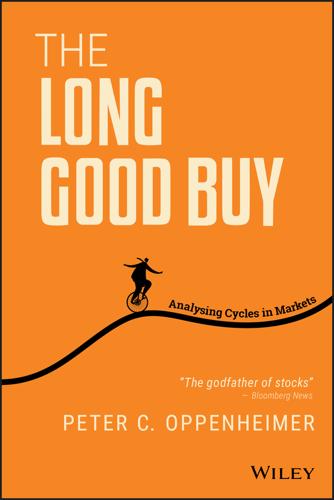
The Long Good Buy: Analysing Cycles in Markets
by
Peter Oppenheimer
Published 3 May 2020
The argument is that changes in monetary policy and fiscal spending have not really been the most important drivers of interest rates. For instance, in his secular stagnation hypothesis, Summers (2015) suggests that chronically weak aggregate demand has, together with ultra-low policy rates, kept desired saving above investment and pushed the natural rate below market rates. The global saving glut (Bernanke 2005) and the shortage of safe assets (Caballero and Farhi 2017)10 have driven excess savings in emerging market economies, reflected in their current account surpluses, into advanced economies, depressing real rates there. But others point out that slower economic growth and lower inflation (partly reflecting the impact of demographics and partly also the impact of rapid technological disruption) are responsible.
…
Ruhr Economic Paper No. 429. Bentolila, S., and Saint-Paul, G. (2003). Explaining movements in the labor share. Contributions to Macroeconomics, 3(1). Benzoni, L., Chyruk, O., and Kelley, D. (2018). Why does the yield-curve slope predict recessions? Chicago Fed Letter No. 404. Bernanke, B. S. (2005). The global saving glut and the U.S. current account deficit. Board of Governors of the Federal Reserve System speech 77. Bernanke, B. (2010, Sept. 2). Causes of the recent financial and economic crisis. Testimony before the Financial Crisis Inquiry Commission, Washington, DC. Bernstein, P. L. (1997). What rate of return can you reasonably expect … or what can the long run tell us about the short run?
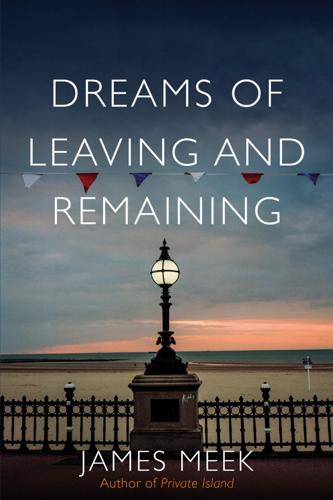
Dreams of Leaving and Remaining
by
James Meek
Published 5 Mar 2019
Countries like China and Saudi Arabia, which exported more goods than they imported, hoarded foreign currency reserves against future rainy days. Large corporations hoarded cash instead of investing in better products. It became easier for individuals legally to suck wealth out of firms they owned, or ran, into their personal hoards. The combined effect was a global savings glut. It didn’t, of course, find expression in warehouses packed with dollar bills. All these hoarders sought to park their hoards in places where they would earn the most interest. Countries like Britain and the US found themselves importing the ‘products’ of resource giants like Saudi Arabia and Russia, and of export giants like China and Germany, twice over: first as the products themselves (oil, gas, cars, phones) and second as the profits made from selling them, in the form of hoarded savings, looking for a return.
…
Countries like Britain and the US found themselves importing the ‘products’ of resource giants like Saudi Arabia and Russia, and of export giants like China and Germany, twice over: first as the products themselves (oil, gas, cars, phones) and second as the profits made from selling them, in the form of hoarded savings, looking for a return. The trouble was that with so much hoarded money looking for a comfy place to sit and grow fat, governments were offering meagre rates of interest. The industries of the old industrial world – places where the savings glut might once have been invested – were themselves more interested in saving than in spending on making themselves bigger and better. So American, British, Irish, Spanish and Icelandic banks found another way to help the hoarders: they parked the money in private loans, first and foremost in residential mortgages.
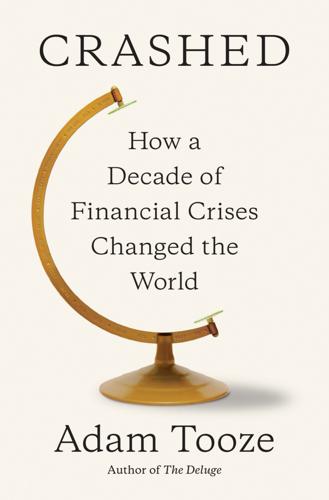
Crashed: How a Decade of Financial Crises Changed the World
by
Adam Tooze
Published 31 Jul 2018
China’s unbalanced growth path created an excess of savings that needed to be invested abroad. AAA-rated US Treasurys were the reserve asset of choice. As a newly appointed member of the Federal Reserve Board, one of the first contributions to the policy debate by the Princeton economist Ben Bernanke was to coin the term “global savings glut” to describe this situation in which the Fed’s principal policy instrument lost its leverage on the economy.44 The availability of foreign funding negated Fed efforts to raise interest rates. At the same time it reduced the pressure on Congress to tighten fiscal policy. As capital surged in, this pushed down US interest rates, stoking the domestic economic upswing and sucking in imports, above all from China.
…
McCauley and Hyun Song Shin, “Breaking Free of the Triple Coincidence in International Finance,” Economic Policy 31, no. 87 (2016): 409–451, graph 6. The rise of China dominated contemporary perceptions of early twenty-first-century globalization. And the axis of imbalance that attracted most attention was that between China and the United States. Worries about geopolitics, Larry Summers’s balance of financial terror, Ben Bernanke’s savings glut, all pointed the finger in that direction. But if we map not annual flows but cross-border banking claims, this gives further proof of how one-sided the Sino-American view of the buildup to the crisis was. The central axis of world finance was not Asian-American but Euro-American. Indeed, of the six most significant pairwise linkages in the network of cross-border bank claims, five involved Europe.
…
Minutes of the Federal Open Market Committee (FOMC) meeting, June 29–30, 2004, https://www.federalreserve.gov/fomc/minutes/20040630.htm. 43. The so-called Mundell-Fleming model of open economy macroeconomics originated already in the 1960s, see J. M. Boughton, “On the Origins of the Fleming-Mundell Model” (IMF Staff Papers 50, 2003), 1–9. 44. B. Bernanke, “The Global Saving Glut and the US Current Account Deficit,” No. 77, Board of Governors of the Federal Reserve System (US), 2005. 45. B. Bernanke, “On Milton Friedman’s Ninetieth Birthday” (conference to honor Milton Friedman, November 8, 2002). 46. M. Friedman and A. J. Schwartz, A Monetary History of the United States, 1867–1960 (Princeton, NJ: Princeton University Press, 2008), 407–414. 47.
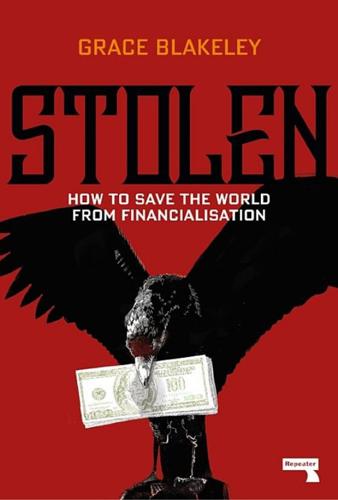
Stolen: How to Save the World From Financialisation
by
Grace Blakeley
Published 9 Sep 2019
Minsky: The Financial Theory of Investment”, Levy Economics Institute Working Paper 543. http://www.levyinstitute.org/publications/macroeconomics-meets-hyman-p-minsky; Bhattacharya, S., Goodhart, C., Tsomocos, D.P. and Vardoulakis, A.P. (2014) “A Reconsideration of Minsky’s Financial Instability Hypothesis”, Journal of Money, Credit and Banking, vol. 45 http://eprints.lse.ac.uk/64218/ 5 OECD (2011) “International Capital Flows: Structural Reforms and Experience with the OECD Code of Liberalisation of Capital Movements”, Report from the OECD to the G20 Sub-Group on Capital Flow Management. https://www.oecd.org/economy/48972216.pdf 6 Lane, P. (2012) “Financial Globalisation and the Crisis”, BIS Working Paper 397. https://ssrn.com/abstract=2248065 7 This account draws on: Blakeley (2018a); Lane (2012); Favilukis, J., Kohn, D., Ludvigson, S.C. and Van Nieuwerburgh, S. (2012), “International Capital Flows and House Prices: Theory and Evidence”, in Housing and the Financial Crisis, Chicago: University of Chicago Press. https://static1.squarespace.com/static/54397369e4b0446f66937a73/t/56590b88e4b0702d37f626e1/1448676232727/nbh.pdf; Ferrero, A. (2012) “House Price Booms, Current Account Deficits, and Low Interest Rates”, Staff Report Number 541, Federal Reserve Bank of New York. https://www.newyorkfed.org/medialibrary/media/research/staff_reports/sr541.pdf; Felix, D. (2005) “Why International Capital Mobility Should Be Curbed and How It Could Be Done”, in Epstein (2005); Geet, P. (2015) “Housing Demand, Savings Gluts and Current Account Dynamics”, Globalization and Monetary Policy Institute Working Paper 221 https://www.dallasfed.org/~/media/documents/institute/wpapers/2015/0221.pdf; Guschanski, A. and Stockhammer, E. (2017) “Are Current Accounts Driven by Competitiveness or Asset Prices? A Synthetic Model and an Empirical Test”, Greenwich Papers in Political Economy number GPERC55 http://gala.gre.ac.uk/17946/1/CA%20imb%20draft%201_00%20gppe%20%282%29. pdf; Laibson, D. and Mollerstrom, J. (2010) “Capital Flows, Consumption Booms and Asset Bubbles: A Behavioural Alternative to the Savings Glut Hypothesis”, The Economic Journal, vol. 120 https://onlinelibrary.wiley.com/doi/abs/10.1111/j.1468-0297.2010.02363. 8 This account draws on: Tooze (2018); Aalbers (2008); Acharya, V. and Richardson, M. (2009) “Causes of the Financial Crisis”, Critical Review, vol. 21; Lysandrou (2011); Dymski, G. (2009) “Why the Subprime Crisis Is Different: A Minskyian Approach”, Cambridge Journal of Economics vol. 34; Segoviano, M., Jones, B., Lindner, P. and Blankenheim, J. (2013) “Securitization: Lessons Learned and the Road Ahead”, IMF Working Paper 13/255. https://www.imf.org/external/pubs/ft/wp/2013/wp13255.pdf; Ashcraft, A. and Schuermann, T. (2008) “Understanding the Securitisation of Subprime Mortgage Credit”, Federal Reserve Bank of New York Staff Reports No 318; Lewis, M. (2011) The Big Short: Inside the Doomsday Machine, London: Penguin; National Audit Office (2016) “Introduction to Asset-Backed Securities”, Briefing Paper November 2016. https://www.nao.org.uk/wp-content/uploads/2016/07/Introduction-to-asset-backed-securities.pdf; Bank of England (2008) Financial Stability Report No. 23, April 2008 https://www.bankofengland.co.uk/-/media/boe/files/financial-stability-report/2008/may-2008; Bank of England (2007) Financial Stability Report No. 22, October 2007. 9 This account draws on: Tooze (2018); Fligstein, N. and Goldstein, A. (2012) “A Long Strang Trip The State and Mortgage Securitisation, 1968-2010”, in Preda, A. and Knorr-Cetina, K.
…
A Synthetic Model and an Empirical Test”, Greenwich Papers in Political Economy number GPERC55 http://gala.gre.ac.uk/17946/1/CA%20imb%20draft%201_00%20gppe%20%282%29. pdf; Laibson, D. and Mollerstrom, J. (2010) “Capital Flows, Consumption Booms and Asset Bubbles: A Behavioural Alternative to the Savings Glut Hypothesis”, The Economic Journal, vol. 120 https://onlinelibrary.wiley.com/doi/abs/10.1111/j.1468-0297.2010.02363. 8 This account draws on: Tooze (2018); Aalbers (2008); Acharya, V. and Richardson, M. (2009) “Causes of the Financial Crisis”, Critical Review, vol. 21; Lysandrou (2011); Dymski, G. (2009) “Why the Subprime Crisis Is Different: A Minskyian Approach”, Cambridge Journal of Economics vol. 34; Segoviano, M., Jones, B., Lindner, P. and Blankenheim, J. (2013) “Securitization: Lessons Learned and the Road Ahead”, IMF Working Paper 13/255. https://www.imf.org/external/pubs/ft/wp/2013/wp13255.pdf; Ashcraft, A. and Schuermann, T. (2008) “Understanding the Securitisation of Subprime Mortgage Credit”, Federal Reserve Bank of New York Staff Reports No 318; Lewis, M. (2011) The Big Short: Inside the Doomsday Machine, London: Penguin; National Audit Office (2016) “Introduction to Asset-Backed Securities”, Briefing Paper November 2016. https://www.nao.org.uk/wp-content/uploads/2016/07/Introduction-to-asset-backed-securities.pdf; Bank of England (2008) Financial Stability Report No. 23, April 2008 https://www.bankofengland.co.uk/-/media/boe/files/financial-stability-report/2008/may-2008; Bank of England (2007) Financial Stability Report No. 22, October 2007. 9 This account draws on: Tooze (2018); Fligstein, N. and Goldstein, A. (2012) “A Long Strang Trip The State and Mortgage Securitisation, 1968-2010”, in Preda, A. and Knorr-Cetina, K.
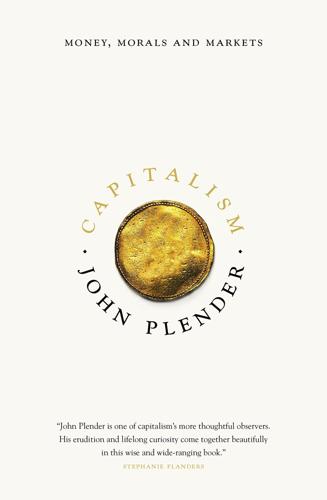
Capitalism: Money, Morals and Markets
by
John Plender
Published 27 Jul 2015
The temptation is overwhelming to bestow it on somebody.’204 The remorseless rise in public indebtedness was further exacerbated by rising life expectancy and falling birth rates, which made health-care and pension commitments more costly. In the US and several other countries, incomes remained stagnant for the best part of three decades. An illusion of rising living standards was nonetheless maintained, either because households borrowed more against their overvalued homes in a very free credit environment fuelled by a global savings glut, which was the case in the US and the UK, or because governments created unproductive make-work jobs, as in Italy, Spain and Greece. As Raghuram Rajan sees it: The advanced countries have a choice. They can act as if all is well, except that their consumers are in a funk, and that ‘animal spirits’ must be revived through stimulus.
…
Shiller, Finance and the Good Society, Princeton University Press, 2012. 113 Quoted in ‘China’s Holdings of US Securities: Implications for the US economy’, a report by Wayne M. Morrison and Marc Labonte of the Congressional Research Service, 19 August 2013. 114 The Bill From the China Shop: How Asia’s Savings Glut Threatens the World Economy, co-authored with Diana Choyleva, Profile Books, 2006. 115 The Great Convergence: Asia, the West, and the Logic of One World, Public Affairs, 2013. 116 Quoted in Don’t Blame The Shorts by Robert Sloan, McGraw-Hill, 2010. 117 Karl Marx, Fourth Estate, 1999. 118 Kynaston, ibid. 119 Macmillan, 1999. 120 In reality, the lender of shares sells them to the short seller and buys them back in due course, so the standard terminology used by market practitioners on stock lending and short selling is at odds with the contractual legal position. 121 Ibid. 122 Alexander Hamilton, Penguin Group, 2005. 123 Financial Times, 16 May 2009. 124 Content.ksg.harvard.edu/…/jeff_frankels…/commodity-prices-again; 125 See Robert Sloan, ibid., for an excellent, more detailed account. 126 This is just one in a splendid Dickensian line of portentously named companies that includes such gems as the Anglo-Bengalee Disinterested Loan & Life Insurance Company in Martin Chuzzlewit.

The Globalization Paradox: Democracy and the Future of the World Economy
by
Dani Rodrik
Published 23 Dec 2010
It has raised serious questions about the sustainability of global capitalism, at least in the form that we have experienced in the last quarter century. What might have prevented the financial crisis? Did the problem lie with unscrupulous mortgage lenders? Spendthrift borrowers? Faulty practices by credit rating agencies? Too much leverage on the part of financial institutions? The global savings glut? Too loose monetary policy by the Federal Reserve? Government guarantees for Fannie Mae and Freddie Mac? The U.S. Treasury’s rescue of Bear Stearns and AIG? The U.S. Treasury’s refusal to bail out Lehman Brothers? Greed? Moral hazard? Too little regulation? Too much regulation? The debate on these questions remains fierce and will no doubt continue for a long time.
…
Calls for increased regulation of finance were rebuffed by pointing out that banks would simply get up and move to less regulated jurisdictions.23 The immediate causes of the financial crisis of 2008 are easy to identify in hindsight: mortgage lenders (and borrowers) who assumed housing prices would keep rising, a housing bubble stoked by a global saving glut and the reluctance of Alan Greenspan’s Federal Reserve to deflate it, financial institutions addicted to excessive leverage, credit rating agencies that fell asleep on the job, and of course policy makers who failed to get their act together in time as the first signs of the crisis began to appear.
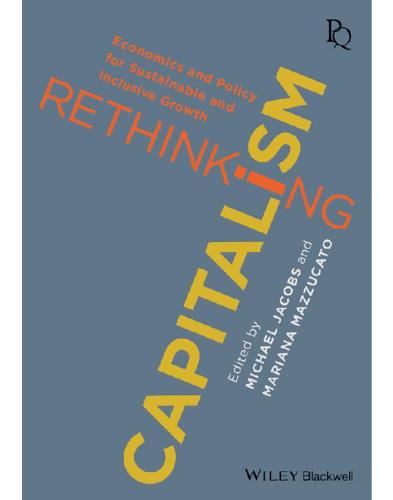
Rethinking Capitalism: Economics and Policy for Sustainable and Inclusive Growth
by
Michael Jacobs
and
Mariana Mazzucato
Published 31 Jul 2016
Countries with a high share of wages will thus not be able to accumulate capital as rapidly as those with a low share of wages. The only way to generate savings required for long-term growth is thus to ensure sufficient income for the rich. This argument is particularly inapposite today, where the problem is, to use Bernanke’s term, a global savings glut.42 But even in those circumstances where growth would be increased by an increase in national savings, there are better ways of inducing savings than increasing inequality. The government can tax the income of the rich, and use the funds to finance either private or public investment; such policies reduce inequalities in consumption and disposable income, and lead to increased national savings (appropriately measured).
…
Heath and Company Lexington Books, 1974, pp. 5–26. 42 I have argued elsewhere (‘Monetary policy in a multipolar world’, in J. E. Stiglitz and R. S. Gurkaynak, eds, Taming Capital Flows: Capital Account Management in an Era of Globalization, IEA Conference Volume No. 154, New York, Palgrave Macmillan, 2015) that the problem is not really a savings glut: there are huge needs for investment on the global level. Unfortunately, the global financial system is unable to intermediate—to ensure that the available savings is used to finance the real global investment needs. The consequence is the ‘paradox of thrift’: savings leads to inadequate aggregate demand. 43 A.

The Corruption of Capitalism: Why Rentiers Thrive and Work Does Not Pay
by
Guy Standing
Published 13 Jul 2016
It and Southeast Asian countries such as Malaysia and Singapore have become rentier economies, with the means to invest in rich countries and buy up companies and other assets. They have accumulated large cash hoards by keeping labour costs low, which constrains consumption at home. Concentrated in the hands of a few plutocrats and a growing elite, this ‘savings glut’ has created a stock of funds to invest in assets all over the world, much of it in property. China has become a special rentier economy. State-owned enterprises spearheaded its export-led industrialisation, helped by subsidies and low wages. The resultant trade surpluses, alongside capital inflows, enabled China to accumulate vast foreign currency reserves.
…
Flows of $8 trillion into those economies generated $5 trillion of credit annually.14 Much of that went into fuelling property bubbles at home and abroad. Ben Bernanke, former chair of the US Federal Reserve, and economists at the International Monetary Fund (IMF) are among those arguing that the combination of loose monetary policy, financial innovation and the savings glut in emerging market economies is responsible for housing price bubbles in Britain, the USA and elsewhere.15 This has contributed to the growth of wealth inequality and a revival of landlordism. This time, however, many of the landlords are on the other side of the world. THE SILICON REVOLUTION – APOLOGY TO NED LUDD ‘Within the very near future – much less than twenty-five years – we shall have the technical capacity of substituting machines for any and all human functions in organisations.’

The Glass Half-Empty: Debunking the Myth of Progress in the Twenty-First Century
by
Rodrigo Aguilera
Published 10 Mar 2020
Source: Scripps Institute of Oceanography UCSD.4 To put it bluntly: markets will not save us. As if yet another contradiction of capitalism is needed at this point, we live in a world awash with savings yet with precious few investments into which they can be channeled. Economists have given this phenomenon various names and various causes. One is the “global savings glut” described by former Fed Chairman Ben Bernanke and driven by excess savings by certain economies (namely China, oil producers like Saudi Arabia, and Germany).5 Another is “secular stagnation”, a Depression-era hypothesis recently revived by Lawrence Summers, which is caused by low population growth, reduced capital intensity of new industries, and low prices of capital goods.6 Yet the extraordinary investments needed to combat climate change suggest that there should be no shortage of opportunities for climate-conscious investors.
…
, Finance and Development, 53(2), Jun. 2016, https://www.imf.org/external/pubs/ft/fandd/2016/06/ostry.htm 59 Harvey, D., “Neoliberalism as Creative Destruction”, The Annals of the American Academy of Political and Social Science, 610, Mar. 2007, https://doi.org/10.1177/0002716206296780 60 Biebricher, T., “Neoliberalism and Democracy”, Constellations, 22(2), 2015, https://doi.org/10.1111/1467-8675.12157 61 “Statement of Aims”, The Mont Pelerin Society, https://www.montpelerin.org/statement-of-aims/ Epilogue: Winds of Change 1 “Matt Ridley - Stories for Change”, OpenLearn, 13 Nov. 2015, https://www.open.edu/openlearn/nature-environment/the-environment/creative-climate/stories-change/matt-ridley-stories-change 2 Global Warming of 1.5 °C (Intergovernmental Panel on Climate Change, 2018), Ch. 1, https://www.ipcc.ch/sr15/ 3 Pinker, S., Enlightenment Now, pg. 7 4 Scripps CO2 program, https://scripps.ucsd.edu/programs/keelingcurve/permissions-and-data-sources/ http://scrippsco2.ucsd.edu/data/atmospheric_co2/icecore_merged_products 5 Bernanke, B., “The Global Saving Glut and the U.S. Current Account Deficit”, The Federal Reserve Board, 10 Mar. 2005, https://www.federalreserve.gov/boarddocs/speeches/2005/200503102/default.htm 6 Most of Lawrence Summer’s writing on the topic can be accessed at: http://larrysummers.com/category/secular-stagnation/ 7 Alcott, B., “Jevons’ paradox”, Ecological Economics, 50(1), Jul. 2005, https://doi.org/10.1016/j.ecolecon.2005.03.020 8 Peeters, P. et al., “Are technology myths stalling aviation climate policy?”
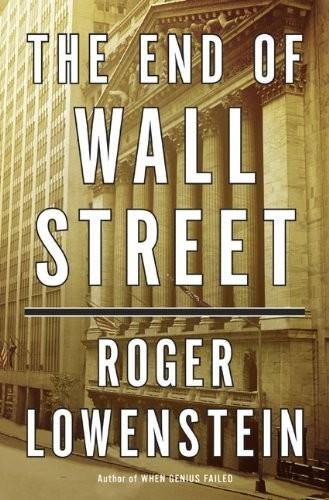
The End of Wall Street
by
Roger Lowenstein
Published 15 Jan 2010
While the world chided America for borrowing so much, Bernanke suggested that the fault lay equally with the lenders. As he elaborated in a much-quoted 2005 address, the decline in U.S. saving might in some part be “a reaction to events external to the United States. . . . My own preferred explanation focuses on what I see as the emergence of a global saving glut in the past eight to ten years.”7 In short, America was borrowing because others were lending. The “others” were China and other countries, many from the Third World—once profligate but lately transformed into paragons of thrift. Bernanke argued that their dollars had to flow somewhere, and the United States was merely an attractive destination.
…
This time, as two professors, Carmen Reinhart of the University of Maryland and Kenneth Rogoff of Harvard, put it, “a large chunk of money had been recycled to a developing economy that exists within the United States’ own borders [emphasis added].”8 Surplus credit was flowing not to weak borrowers overseas, but to a Subprime Nation inside the United States. Generally, it is the job of the Fed to mitigate potentially destabilizing financial currents. And Bernanke was well aware that the global savings glut was making its presence felt in the bubbly market for real estate—in particular, he noted, “as low mortgage rates have supported record levels of home construction and strong gains in housing prices.” In other words, foreigners were lending cash that, via a network of financial intermediaries, was fueling home buyers and inflating prices potentially beyond the level warranted by supply and demand.

House of Cards: A Tale of Hubris and Wretched Excess on Wall Street
by
William D. Cohan
Published 15 Nov 2009
And as things stand, it is more likely than not that it will be financial crises rather than policy foresight that will force the change…. I think we are skating on increasingly thin ice.” A month later, Fed Governor Bernanke proclaimed there was a “global savings glut,” especially in China and other developing countries where consumption was low, helping to fuel a high global demand for the debt of the United States, keeping interest rates low. “In retrospect, we didn't have a global savings glut,” explained Stephen Roach, the chairman of Morgan Stanley Asia, “we had an American consumption glut. In both of these cases, Bernanke was complicit in massive policy blunders on the part of the Fed.”
…
On the call: New York Post, August 6, 2004. 292. “Consistently performing makes”: Andrew Bary “How Sweet It Is,” Barron's, August 2, 2004. Chapter 25: Cioffi's Bubble 293. “pockets of severe stress”: Alan Greenspan speech at Americas Community Bankers Annual Convention, Washington, D.C., October 19, 2004. 293. “global savings glut”: Ben Bernanke speech at the Virginia Association of Economics, Richmond, Virginia, March 10, 2005. 293. “In retrospect”: John Cassidy, NY December 1, 2008. 294. “increase home ownership”: Dennis Sewell, Spectator, October 1, 2008. 296. “an explicit target”: Russell Roberts, “How Government Stoked the Mania,” WSJ, October 3, 2008. 300.

European Spring: Why Our Economies and Politics Are in a Mess - and How to Put Them Right
by
Philippe Legrain
Published 22 Apr 2014
Three in five Spaniards think so, as do two in three Britons, three in four Italians and more than three in four French and Greeks. 36 Pew Research Center, Global Attitudes Survey, Spring 2013, Q31. 54 per cent of Germans think their country’s economy has been strengthened by European integration. 37 Ibid, Q83. 38 Adam Posen, "The UK is very European – in its mistakes", Financial Times, 22 February 2013 http://www.ft.com/cms/s/0/cdcfe152-7b79-11e2-8eb3-00144feabdc0.html 39 RBS figures are from http://www.bbc.co.uk/news/uk-england-26364715. Credit to businesses in the eurozone contracted by 3 per cent in the year to December 2013 and by 2.9 per cent in the year to January 2014. http://www.ecb.europa.eu/press/pdf/md/md1401.pdf 40 See, for example, Hyun Song Shin, “Global savings glut or global banking glut?”, Vox.eu, 20 December 2011 http://www.voxeu.org/article/global-savings-glut-or-global-banking-glut 41 High-Level Expert Group on Reforming the Structure of the EU Banking Sector, chaired by Erkki Liikanen, 2 October 2012 http://ec.europa.eu/internal_market/bank/docs/highlevel_expert_group/report_en.pdf Table A1.2: total number and assets of monetary financial institutions by country (March 2012) 42 OECD, Debt of financial corporations, as a percentage of GDP, DBTS12GDP 43 OECD, Household debt as a share of gross disposable income, DBTS14_S15GDI In the UK it rose from 112.39 per cent in 2000 to 174.15 per cent in 2007, that is by a factor of 1.55; in the Netherlands it rose from 163.72 per cent in 2000 to 242.37 per cent, that is by a factor of 1.48. 44 See Nationwide House Price Index, http://www.nationwide.co.uk/hpi/historical.htm and http://www.cotizalia.com/cache/2008/07/03/46_europa_preocupa_mucho_ajuste_inmobiliario_espana.html 45 Philippe Legrain, Aftershock: Reshaping the World Economy After the Crisis, Little, Brown: 2010 46 Nouriel Roubini with Stephen Mihm, Crisis Economics: A Crash Course in the Future of Finance, Allen Lane: 2010 47 Charles Kindleberger, Manias, Panics and Crashes, Wiley: 1978 48 Philippe Legrain, Open World: the Truth about Globalisation, Abacus: 2002 49 Financial markets were deemed efficient in the sense that prices set by the market were “right” since they were determined by rational investors acting on all available information and mistakes were rapidly corrected by other profit-seeking investors. 50 As Bill White has observed, in the 1980s the fight against high inflation was justified on the grounds that it was ‘necessary’ for macroeconomic stability.
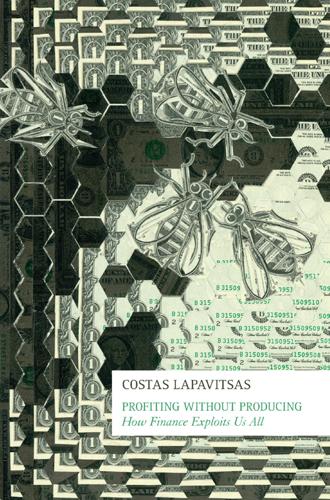
Profiting Without Producing: How Finance Exploits Us All
by
Costas Lapavitsas
Published 14 Aug 2013
At the BIS, however, William White argued that central bank should ‘lean against the wind’ by raising interest rates when bubbles threatened, even if price stability and growth targets were not compromised (‘Procyclicality in the Financial System’, BIS Working Paper No. 193, 2006; ‘Is Price Stability Enough?’, BIS Working Paper No. 205, 2006). In contrast, Ben Bernanke, who became the head of the US Federal Reserve, argued that credit and asset bubbles should be allowed to follow their course, the authorities intervening aggressively only after the bubble would have burst (‘The Global Saving Glut and the U.S. Current Account Deficit’, 10 March 2005; ‘The Subprime Mortgage Market’, 17 May 2007). The response of economists following the burst of the bubble was similarly weak, typically offering bland technical advice, such as improving information flows and extending regulation across financial institutions; for instance, see Randall Dodd, ‘Subprime: Tentacles of a Crisis’, Finance and Development, December 2007.
…
Berger, Allen, Nathan Miller, Mitchell Petersen, Raghuram Rajan, and Jeremy Stein, ‘Does Function Follow Organizational Form? Evidence From the Lending Practices of Large and Small Banks’, Journal of Financial Economics 76, 2005, pp. 237–69. Berle, Adolph, and Gardiner Means, The Modern Corporation and Private Property, New York: Macmillan, 1932. Bernanke, Ben, ‘The Global Saving Glut and the U.S. Current Account Deficit’, remarks at the Sandridge Lecture, Virginia Association of Economists, Richmond, VA, 10 March 2005, available at federalreserve.gov. Bernanke, Ben, ‘The Great Moderation’, remarks at the meeting of the Eastern Economic Association, Washington, DC, 20 February 2004, at federalreserve.gov.

More: The 10,000-Year Rise of the World Economy
by
Philip Coggan
Published 6 Feb 2020
Another factor behind the bubble was the very low level of bond yields. This seems to have been driven by the reaction of Asian countries to the late 1990s crisis. They ran trade surpluses, accumulated foreign exchange reserves, and then invested them in US government bonds. In the view of Ben Bernanke, who became Fed chairman in 2006, this led to a “savings glut” that kept yields low.44 All seemed to be going well for the world economy in 2006. The liberal market economy – a combination of the welfare state, free markets and a buoyant financial sector – had been adopted across the developed world and was accepted by centre-left politicians like Bill Clinton and Tony Blair as well as by conservatives.
…
Robert Shiller, Irrational Exuberance, third edition 42. Judith Yates, “Housing in Australia in the 2000s: on the agenda too late?”, https://www.rba.gov.au/publications/confs/2011/yates.html 43. Tobias Buck, “Spain: boom to bust and back again”, Financial Times, April 6th 2017 44. Ben S. Bernanke, “The global saving glut and the US current account deficit”, the Sandridge Lecture, Virginia Association of Economists, Richmond, Virginia, March 10th 2005 Chapter 15 – Government: an ever-present force 1. Some of the reporting for this chapter also featured in my article for The Economist, “A welcome upgrade to apprenticeships”, July 12th 2018 2.
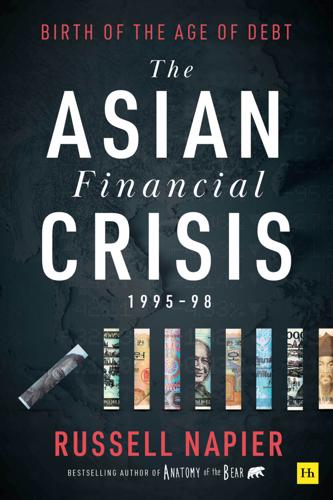
The Asian Financial Crisis 1995–98: Birth of the Age of Debt
by
Russell Napier
Published 19 Jul 2021
That it was also producing ever-cheaper imports to boost consumption, while depressing inflation in the developed world, was also welcome. The non-system That what was often mistakenly referred to as the ‘savings glut’ from Asia forced developed world interest rates lower, making credit cheaper and more available, also did not hinder the electoral chances of politicians. This was no ‘savings glut’, but the clear consequence of massive exchange rate manipulation. That those artificially undervalued Asian exchange rates were stripping some forms of blue-collar jobs from the developed world was something largely ignored as booming economies saw new, though usually less rewarding, jobs created.
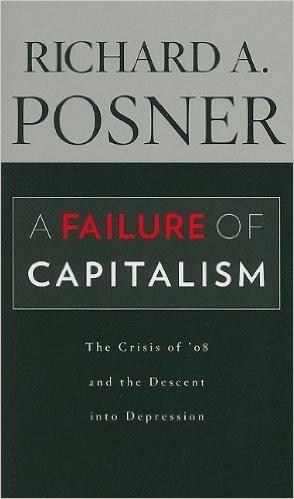
A Failure of Capitalism: The Crisis of '08 and the Descent Into Depression
by
Richard A. Posner
Published 30 Apr 2009
If—a critical assumption — all prices, including the price of labor (wages), are completely flexible, suppliers, including suppliers of labor—workers —will reduce their prices in an effort to retain as many buyers as possible. With consumers saving more because they are buying less, and at lower prices, interest rates —earnings on savings—will fall because there will be a savings glut. The lower interest rates will induce borrowing; and with more borrowing and lower prices, spending will soon find its way back to where it was before the shock. One reason this will happen is that not all consumers are workers, and those who are not, and whose incomes therefore are unimpaired, will buy more goods and services as prices fall.
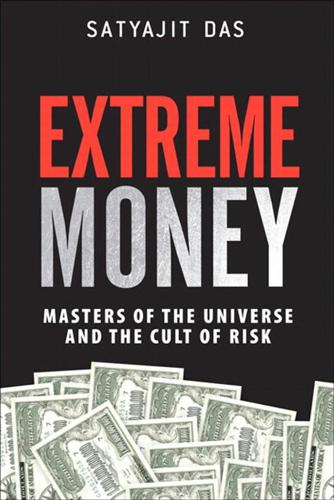
Extreme Money: Masters of the Universe and the Cult of Risk
by
Satyajit Das
Published 14 Oct 2011
He was powerless, as legislators would have prevented him from taking action. It was an odd admission of helplessness from the second most important man on the planet. Greenspan’s analysis of the crisis was conventional; central banks were innocent voyeurs to events. He recited Ben Bernanke’s global saving glut thesis—an excess of global saving created the problems. He steadfastly denied that loose money or deregulation of the financial system were key elements of the crisis. Keynes argued that “the difficulty lies not so much in developing new ideas as in escaping from old ones.”46 But as John Kenneth Galbraith realized, “faced with the choice between changing one’s mind and proving there is no need to do so, almost everyone gets busy on the proof.”47 Patrick Artus, economic adviser to the French government and author of Les incendiaires: Les banques centrales dépassées par la globalisation (The Arsonists: Central Banks Overtaken by Globalisation), called Greenspan a “very bad Fed chairman” who created four major crises—savings and loans, LTCM, new-technology shares and subprime mortgages.
…
See also John Maynard Keynes genocide, 38 George, Lloyd, 48, 340 Gere, Richard, 326 Germany, 312 gold, 359 inflation in, 22 get-rich investment and trading-secrets books, 98 Gherkin, 79 Gibson Greetings, 135 Gipp, George, 97 Girl with the Dragon Tattoo, The, 360 Girls Gone Wild, 344 Gladwell, Malcolm, 329 Glass, Carter, 66 Glass-Steagall Act of 1933, 66, 201 Glassman, James, 97, 99 Gleacher, Eric, 148 Glengarry Glen Ross, 185 global credit process, 88 Global Crossing, 154 global financial crisis, 310, 346-347 aftermath, 361-366 European debt crisis, 357-359 Greece, 354-356 solutions, 352-354 global saving glut thesis, 303 globalization, 38, 41 GNH (gross national happiness), 364 Go-Between, The, 185 Godfather, The, 147 gold, 21, 25-27, 58 China’s investment in, 87 circulation of, 32 effect of speculators on price, 28 Germany, 359 reserves, 30 Sons of Gwalia (SoG), 216 standard, 29-31 golden ring, 314 golden years, 46.
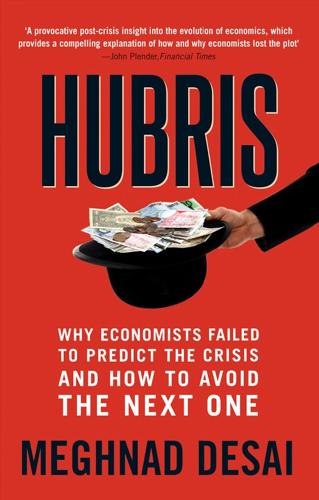
Hubris: Why Economists Failed to Predict the Crisis and How to Avoid the Next One
by
Meghnad Desai
Published 15 Feb 2015
At the same time governments carried on borrowing even in prosperous times. Apart from the two last years of the Clinton Administration, the US Budget has been in deficit from the time Reagan became President. During the presidency of George W. Bush (2001–9), the US ran a trade deficit in addition to the budget deficit. The defense was that given the savings glut, America was doing a noble job by being the consumer of the last resort. But it also became a debtor of the first rank. The long boom of 1945–70 was based on a demographic surge and the growth of manufacturing which held up workers’ income. Governments had stable tax revenue and savings in pension contribution from people working their way for a few more decades before they were to retire.

Cogs and Monsters: What Economics Is, and What It Should Be
by
Diane Coyle
Published 11 Oct 2021
The next day he sent me an email that began, ‘I thought your talk last night was shabby and ungracious, to say the least. It hardly helps to slag off half the profession, particularly in convoluted jargon.’ And continued by saying he for one had forecast the GFC: ‘I wrote in September, 2004 … the first statement of the savings-glut idea, which made it easy to see the inevitability of a financial crisis. Several other economists correctly forecast the crisis arising from US household borrowing. I suggest you do your research by reading this material before next opining on macro-economics.’ Indeed, some economists did foresee a crisis, though it is fair to say the weight of professional opinion prior to 2008 did not, for those who could claim such foresight certainly made sure the world knew afterwards.
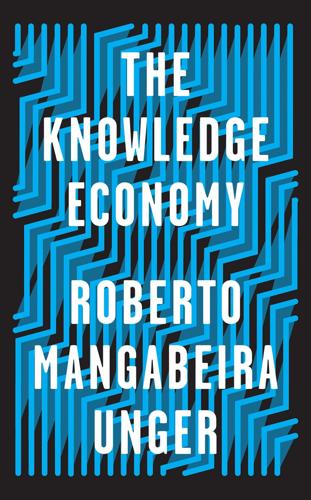
The Knowledge Economy
by
Roberto Mangabeira Unger
Published 19 Mar 2019
After a period of slow growth, productivity spiked in 1994–2005 and then fell back again. The slowdown in the growth of productivity since 1972, interrupted only by the turn-of-the-century spike, has been attributed to many of the factors emphasized by Hansen in the 1930s: the decline of population growth, the inadequacy of aggregate demand, and a “savings glut”—an excess of savings over consumption. One factor, however, largely absent from the older discussion of secular stagnation, has now taken center stage: the supposedly more limited transformative effect of contemporary technologies, especially in communication and information, when compared to the technological innovations of a hundred years ago.
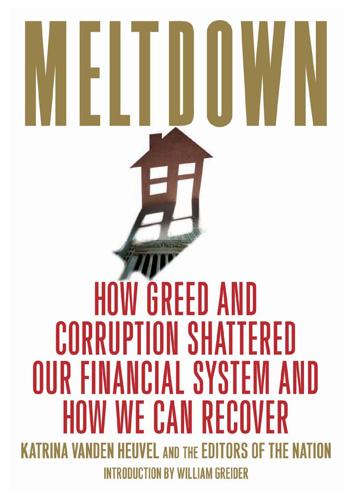
Meltdown: How Greed and Corruption Shattered Our Financial System and How We Can Recover
by
Katrina Vanden Heuvel
and
William Greider
Published 9 Jan 2009
It was instead recklessly experimental, testing out its new theories in the human laboratory and ignoring any negative results. Who can still believe in “efficient markets”? Not the folks who lost $6 trillion in the stock market. Who can seriously argue that capital investors need still more “supply side” favors from government, when even Bush’s economic adviser complains of a “global savings glut”? Who still wants to liberate the fraud-happy bankers and financiers from the dead hand of government regulation? My point is, the market ideology is in deep trouble—intellec-tually, if not politically. If you go behind the mystique and examine Greenspan’s performance, there is abundant evidence that demonstrates in real terms the right’s economic fallacies, never mind its moral failings.

The Age of Stagnation: Why Perpetual Growth Is Unattainable and the Global Economy Is in Peril
by
Satyajit Das
Published 9 Feb 2016
Economic activity globally was affected by slower growth in populations and workforces, as well as declining improvements in productivity. Lawrence Summers argued that the problem was not the result of the GFC itself, having emerged slowly over the previous twenty years. Critics claimed there was no direct evidence of secular stagnation. Some disputed the existence of a savings glut. Others thought that government intervention had distorted the economy. Many pointed out that Alvin Hansen's thesis proved incorrect. World War II, the postwar baby boom, rising consumption, investment, and technological innovation had revived economic growth. Channeling Keynes, Summers argued that greater public investment, rather than monetary policy, was the key to recovery.

The Dawn of Eurasia: On the Trail of the New World Order
by
Bruno Macaes
Published 25 Jan 2018
Europeans have become increasingly convinced that the outside world is the source of all their problems and therefore that a strategy capable of isolating EU politics from these external disturbances is the only way to ensure long-term stability. Take the financial crisis, which many still see as an exclusively American phenomenon. In fact, the impact of the Chinese trade surplus and the corresponding savings glut was probably more important – the expansion of production in China created huge trade and current account deficits, so that economic growth in the United States had to be maintained through a credit bubble. Financial integration across the Atlantic is so deep that Europe would inevitably suffer when that credit bubble burst.
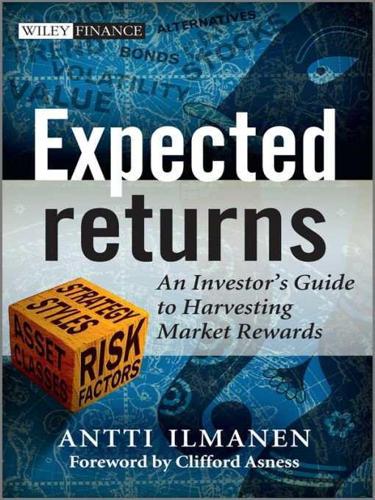
Expected Returns: An Investor's Guide to Harvesting Market Rewards
by
Antti Ilmanen
Published 4 Apr 2011
Demand effects—examples • Demographic developments may have a significant impact on asset prices but the results are controversial. The high proportion of prime-age savers (40 to 60-year-olds) in the population may have contributed to the 1990s “baby-boomer rally” in the stock market. Similar considerations have led to fears of falling prices for risky assets when baby-boomers retire. • The savings glut story was one key explanation of the “conundrum” of low bond yields in the 2000s. Some controversial estimates suggest that foreign investor (mainly Asian central banks) demand for U.S. Treasuries reduced Treasury yields by more than 100 bp and other bond yields (close substitutes) by somewhat less
…
For example, in the U.K., the combination of the minimum funding requirement (legislation that encouraged pension funds to shift from equities to bonds) and fiscal surpluses made long-term gilts extremely expensive at the end of the 1990s. Foreign flows:• In the early 2000s, Asian central banks channeled their surpluses mainly into U.S. Treasuries. The “savings glut” view maintained that such demand was the main reason for historically low real bond yields. Some estimates of the impact of foreign flows on U.S. Treasury yields exceeded 100 bp, but the consensus view was 30 bp to 50 bp. Near-substitutes to Treasuries also benefited from this demand, but to a lesser extent.

Fixed: Why Personal Finance is Broken and How to Make it Work for Everyone
by
John Y. Campbell
and
Tarun Ramadorai
Published 25 Jul 2025
Ian Ayres and Peter Siegelman, “Race and gender discrimination in bargaining for a new car,” American Economic Review 85 (1995): 304–321. While one might suspect racial animus as a cause for this behavior, Ayres and Siegelman show that the behavior is similar even at minority-owned dealerships and among minority car salespeople. 35. See, for example, Atif Mian, Ludwig Straub, and Amir Sufi, “The saving glut of the rich” (unpublished paper). 36. This is the behavior that Nobel Prize–winning economists George Akerlof and Robert Shiller call “Phishing for Phools” in the title of their 2015 book. 37. Cass Sunstein and the Nobel Prize–winning economist Richard Thaler pioneered the use of subtle changes to the choice architecture of finance and other domains to induce good outcomes for individuals by harnessing their inertia.
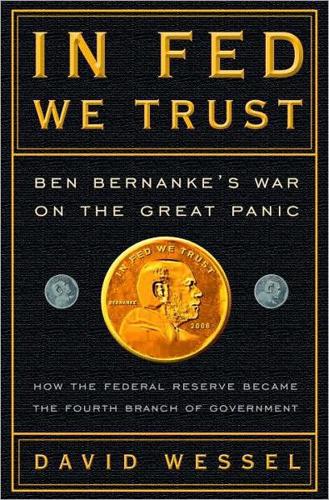
In FED We Trust: Ben Bernanke's War on the Great Panic
by
David Wessel
Published 3 Aug 2009
“We tried in 2004 to move long-term rates higher in order to get mortgage interest rates up and take some of the fizz out of the housing market, but we failed,” Greenspan said just as the Great Panic was beginning. He publicly labeled this “the conundrum,” the fact that the Fed was — albeit slowly — raising short-term interest rates, and long-term rates were not following. Bernanke provided intellectual cover on this front by talking about “a global savings glut,” a torrent of savings from China and the rest of Asia that flooded global markets and especially the United States and was overwhelming the Fed’s ability to tighten credit. Greenspan concurred. The arrival of billions of Chinese, Indian, and Eastern European workers into the global economy created such an antiinflationary force that long-term interest rates simply wouldn’t rise no matter what the Fed did, he asserted.
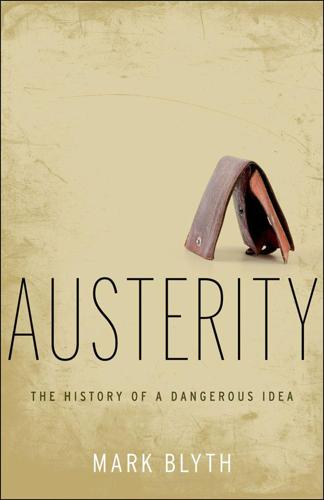
Austerity: The History of a Dangerous Idea
by
Mark Blyth
Published 24 Apr 2013
Ibid., 588, 588–589. 52. Ibid., 589. 53. Ibid., 590. 54. Carmen Reinhart and Kenneth S. Rogoff, This Time Is Different: Eight Centuries of Financial Folly (Princeton, NJ: Princeton University Press, 2009). 55. Murphy, “Genesis,” 176–185. 56. Ibid., 43–71. 57. Ben S. Bernanke, “The Global Saving Glut and the U.S. Current Account Deficit,” remarks by Governor Ben S. Bernanke at the Homer Jones Lecture, St. Louis, Missouri, April 14, 2005; Wolf, Fixing Global Finance, (Baltimore, MD: Johns Hopkins University Press, 2008). 58. See Philip Plickert, “Ungleichgewichte,” Frankfurter Allgemeine Zeitung, August 13, 2012, http://www.faz.net/aktuell/wirtschaft/aussenhandel-ungleichgewichte-11854842.html. 59.

A Pelican Introduction Economics: A User's Guide
by
Ha-Joon Chang
Published 26 May 2014
The idea of ‘unknown unknowns’ nicely sums up Keynes’ concept of uncertainty. Active fiscal policy for full employment: the Keynesian solution In an uncertain world, investors may suddenly become pessimistic about the future and reduce their investments. In such a situation, there will be more savings than are needed – there will be, in technical terms, a ‘savings glut’. The Classical economists thought this glut would be sooner or later eliminated, as the lower demand for savings would drive the interest rate (that is, the price of borrowing, if you like) down, making investments more attractive. Keynes argued that this does not happen. As investment falls, overall spending falls, which then reduces income, as one person’s spending is another’s income.
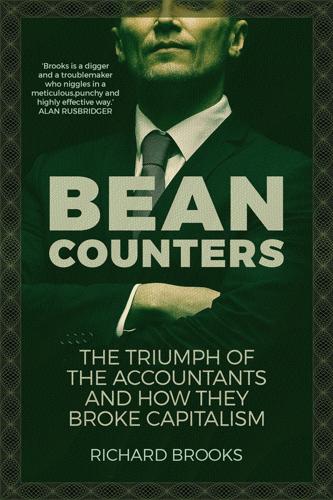
Bean Counters: The Triumph of the Accountants and How They Broke Capitalism
by
Richard Brooks
Published 23 Apr 2018
A few months later, this senior citizen received an answer, possibly because she was the Queen of the United Kingdom, from some of the most eminent brains in the land. The British Academy gathered thirty intellectuals, central bankers and assorted great-and-good and identified some now widely accepted causes: an expansion of credit in response to a largely Chinese savings glut; financial engineering magnifying and hiding risks within the ensuing credit bubble; lax financial regulation; skewed and excessive incentives for bankers, and political indulgence of their methods. Overall, they said, there was a ‘psychology of denial’ and it was ‘difficult to recall a greater example of wishful thinking combined with hubris’.
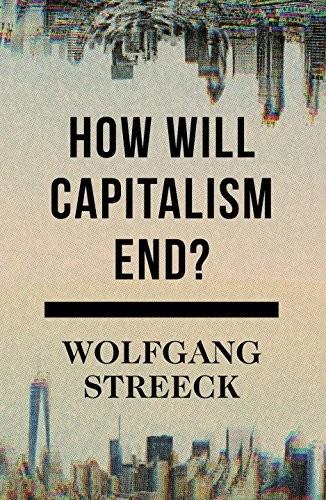
How Will Capitalism End?
by
Wolfgang Streeck
Published 8 Nov 2016
For an interesting assessment of the applicability of underconsumption theory to post-2008 capitalism, see John Bellamy Foster and Fred Magdoff, The Great Financial Crisis: Causes and Consequences, New York: Monthly Review Press 2009. 33Presumably also because he would have had to declare the substantial income he received from Wall Street firms after his resignation from the Obama administration at the end of 2010. See ‘The Fed, Lawrence Summers, and Money’, New York Times, 11 August 2013. 34The same idea had been put forward in 2005 when Ben Bernanke, soon to follow Alan Greenspan at the Fed, invoked a ‘savings glut’ to account for the failure of the Fed’s ‘flooding the markets with liquidity’ to stimulate investment. Today Summers casually subscribes to the view of Left stagnation theorists that the ‘boom’ of the 1990s and early 2000s was a chimera: ‘Too easy money, too much borrowing, too much wealth. Was there a great boom?

The Blockchain Alternative: Rethinking Macroeconomic Policy and Economic Theory
by
Kariappa Bheemaiah
Published 26 Feb 2017
The greater the volatility, the more likely it is that economies will be face severe downturns requiring central bank interest rate cuts (Rogoff, 2016), and therefore the more likely that we will need to indulge in negative interest rates. Third, an increasing tendency to save in emerging economies coupled with ageing populations in developed economies have had a net effect of reduced investment, and hence further perpetuate low interest rates. This was what Ben Bernanke alluded to when he hypothesised about a “global savings glut.” It is for these reasons that central bankers have been indulging in negative interest rates and debating upon their use. Owing to the rarity of the long-term use of this policy instrument , it remains to be seen whether negative interest rates will be an effective solution to the problems of low inflation and near-zero interest rates.

How the Other Half Banks: Exclusion, Exploitation, and the Threat to Democracy
by
Mehrsa Baradaran
Published 5 Oct 2015
The data is clear on this: “More than 84 percent of the subprime mortgages in 2006 were issued by private lending institutions.”81 The Turner Report, the most comprehensive review of the financial crisis, as well as most other serious analyses of the causes of the crisis, start the economic story with the problem of a “savings glut.” Put simply, the U.S. markets became flooded by foreign money seeking a high return on investment. While these funds would usually have bought up U.S. Treasury bonds, the large demand for them lowered Treasury yields and the pool of money flowed toward Wall Street, seeking a better return. The next safest asset class after U.S. treasuries was asset-backed securities, or home mortgages.
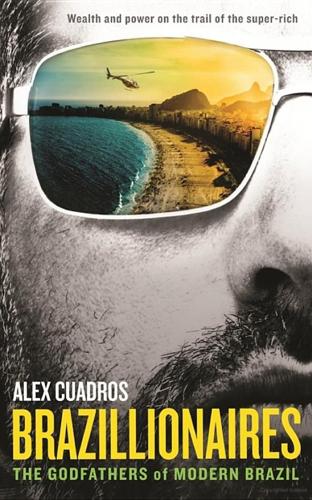
Brazillionaires: The Godfathers of Modern Brazil
by
Alex Cuadros
Published 1 Jun 2016
Instead, these payouts may be financing increased luxury consumption and campaign finance by the rich: Justin Fox, “How Rich Investors Use All That Buyback Cash,” Bloomberg View, November 11, 2015. Also, much of the money is apparently being hoarded—a phenomenon economists refer to as the global savings glut. 212CBMM. Details in Cristiane Lucchesi and Alex Cuadros, “Brazil’s Richest Family Forging $13 Billion Niobium Dream,” Bloomberg, March 13, 2013. 212more made money from money, through investments. In Erin Carlyle, “How Self-Made Forbes 400 Billionaires Earned Their Money,” Forbes, September 18, 2013. 212U.S. government agencies developed GPS.
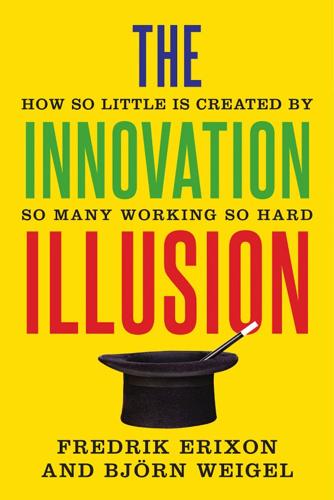
The Innovation Illusion: How So Little Is Created by So Many Working So Hard
by
Fredrik Erixon
and
Bjorn Weigel
Published 3 Oct 2016
Companies can still tap into sources of long-term debt funding but their capital structure has progressively moved toward shorter-term debt. And with that development, the capital performance demands reflects the greater role of liquid forms of debt and owners with shorter stockholding periods. There is a paradox in modern capital markets, and regulation partly explains it. Despite the “savings glut,” or a growing surplus of capital chasing investments, companies have gradually seen their funding for long-term investments squeezed, and that is not just because investors demand better short-term returns. One of the interesting patterns of financial development in recent decades is that while leverage and balance sheets in the financial system have increased, and substantially so, long-term investment and innovation exposure in the corporate sector have declined.
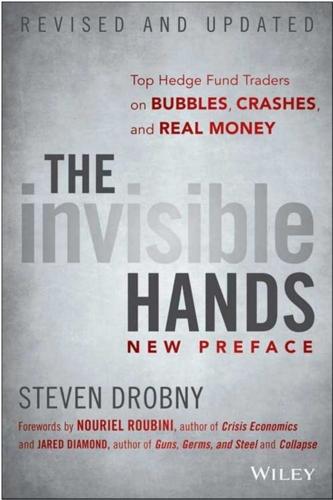
The Invisible Hands: Top Hedge Fund Traders on Bubbles, Crashes, and Real Money
by
Steven Drobny
Published 18 Mar 2010
Look at how well many countries outside the U.S. are doing; it is the decoupling theory. I thought a crisis in debtor countries would drag down surplus countries as well. Not for long, it seems. China is the most obvious example; their fiscal stimulus was huge and so far pretty effective. With perfect hindsight, it makes sense; in a global savings glut environment, when interest rates stay low, you want faster domestic demand in the high savings/creditor countries. That leans against contracting demand growth in the debtor economies. As the U.S. consumer spends less out of income, the Chinese consumer spends more. That helps absorb excess capacity in China and helps limit the global downturn.
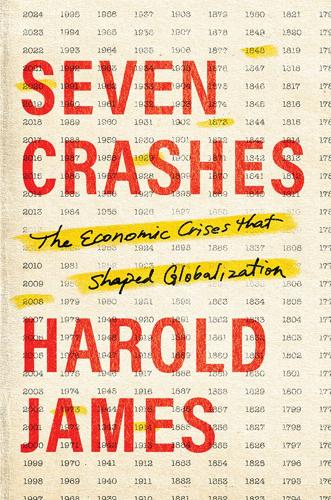
Seven Crashes: The Economic Crises That Shaped Globalization
by
Harold James
Published 15 Jan 2023
Bernanke in this regard was a central maker of the consensus of the Great Moderation period: that it was hard to identify bubbles as they were forming, because the price rises might reflect “real” considerations, and that they could simply be dealt with after a bubble burst (when it would be possible to know that it had been a bubble).105 This was often described as “cleaning” after the event rather than “leaning” against the wind of the bubbles. He also had a theory of how globalization drove asset prices. A “savings glut” in emerging markets, notably China, was explicable in terms of the growth of a new middle class that needed to save for later spending on health care, education, and housing. Corporate savings were also high because of uncertainties. The resultant financial flows drove down interest rates worldwide, and consequently would be expected to raise asset prices.

Civilization: The West and the Rest
by
Niall Ferguson
Published 28 Feb 2011
Between 1840 and 1940, up to 58 million Europeans migrated to the Americas, 51 million Russians to Siberia, Central Asia and Manchuria, and 52 million Indians and Chinese to South-east Asia, Australasia or the Indian Ocean rim.51 Up to 2.5 million migrants from South and East Asia also travelled to the Americas. One in seven of the US population was foreign-born in 1910, a record that has yet to be surpassed.52 Capital, too, flowed around the globe. Britain was the world’s banker, exporting prodigious amounts of capital to the rest of the world; perhaps contemporaries should have praised the English ‘savings glut’ rather than grumbled about imperialism. In the peaks of the overseas investment booms – 1872, 1887 and 1913 – the British current-account surplus exceeded 7 per cent of GDP.53 British firms stood ready to export not just cotton, but the machinery to manufacture cotton and the capital necessary to buy it.

The Default Line: The Inside Story of People, Banks and Entire Nations on the Edge
by
Faisal Islam
Published 28 Aug 2013
Part of the spike in Chinese savings rates can be dated back to a pension reform that severely limited retirement payouts to state workers. Financial markets will need to develop to help the Chinese masses save and smooth their incomes over time. In China, however, the experts refute the notion that high savings really are the problem. The flipside of the ‘savings glut’ in China that America complains about is the ‘investment famine’ in the rest of the world that China is only too keen to point out. Even the management consultants McKinsey & Co. – those high priests of Western globalisation – calculate that there is a $20 trillion investment shortfall in infrastructure around the world, as Western countries have drastically slashed their investment budgets.

Capitalism in America: A History
by
Adrian Wooldridge
and
Alan Greenspan
Published 15 Oct 2018
(This was admittedly unlikely, but if it happened, would have inflicted extensive damage to the economy.) They also fail to take into account the fact that the Federal Reserve’s ability to influence interest rates through the federal funds rate (which is the only interest rate that the Fed controls) has been limited by the global savings glut. The “easy money” critics are right to argue that a low federal funds rate (at only 1 percent between mid-2003 and mid-2004) lowered interest rates for ARMs. But originations of ARMs peaked two years before the peak in home prices. Market demand obviously did not need ARM financing to elevate home prices during the last two years of the expanding bubble.
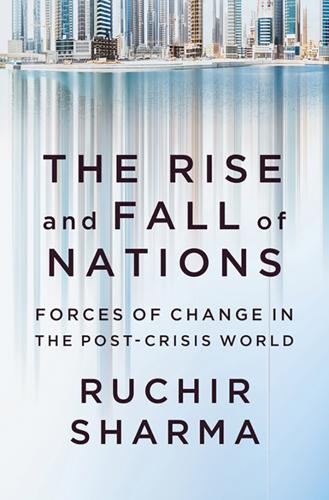
The Rise and Fall of Nations: Forces of Change in the Post-Crisis World
by
Ruchir Sharma
Published 5 Jun 2016
After having collapsed by 2007, the link between domestic saving and domestic investment has also returned to where it was in 1980. Once again, to the extent countries are investing at all, most are funding that investment largely from their own savings.‡ The concern in the post-crisis era is an emerging “savings glut,” created by the lack of investment opportunities. A number of forces are contributing to this glut, but two of the most important are slower growth in the emerging world and the related slump in commodity prices. In the 2000s investment increased as a share of global GDP, but all that increase came in the emerging world, where the slowdown in economic growth in the 2010s has been particularly sharp.

Aerotropolis
by
John D. Kasarda
and
Greg Lindsay
Published 2 Jan 2009
The Great Recession’s roots have proved impossible to trace, but at the macro level there’s consensus that “global economic imbalances” were to blame. China’s factory workers had produced too much and consumed too little—what future Federal Reserve chairman Ben Bernanke had blithely referred to in 2005 as a “global savings glut”—while Americans had done the opposite. The historian Niall Ferguson dubbed their codependency “Chimerica” to underscore how dangerously they’d become entwined, with China’s savings financing America’s debt in order to keep its factories humming. In the aftermath, Ferguson led a chorus of critics calling for the dismantling of Chimerica.

Stress Test: Reflections on Financial Crises
by
Timothy F. Geithner
Published 11 May 2014
We didn’t think it made sense to create more uncertainty about the path of monetary policy just to keep investors guessing and induce more volatility. That concern grew when our gradual increases in the short-term federal funds rate failed to boost long-term interest rates, a situation Greenspan dubbed “the conundrum.” Bernanke, then a member of the Fed board of governors, called this the consequence of a “global savings glut,” explaining that a flood of money from newly opened markets with lots of savings, such as China, was holding down borrowing costs, offsetting our efforts to shrink our own money supply. That seemed right to me. The Fed wasn’t fueling the credit boom with loose policy anymore—we raised rates to 5.25 percent by 2006, well above the underlying inflation rate—but there was still an awful lot of money sloshing around.
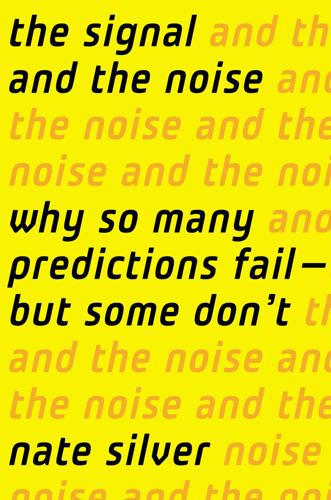
The Signal and the Noise: Why So Many Predictions Fail-But Some Don't
by
Nate Silver
Published 31 Aug 2012
Louis Cardinals, 87 Salk, Jonas, 206 sample sizes, 44, 338–39 San Andreas Fault, 158–59 Sandberg, Ryne, 102 Sanders, John, 94–98, 101, 103, 105 S&P 500, 24–25, 197, 324, 339, 347, 365–66, 462, 499–500, 503 CFOs as overestimating ability to forecast, 359 5–year average return on, 351 1–year return on, 350 P/E ratio of, 349, 350, 351 10–year average return on, 351 20–year return on, 350 San Francisco, Calif., 149, 160, 219n, 221–23, 222, 225, 476 San Simeon, Calif., 160 Santorum, Rick, 217, 333 SARS, 229 satellite temperature record, 394 Saturn, 242–43 savings glut, 31 scenario uncertainty, 392–93 Schelling, Thomas, 419, 420, 510 Schlumberger, William, 262 Schmalkaldic War, 4 Schmidt, Gavin, 390–91, 392, 399, 405, 409 Schneier, Bruce, 439, 443 Schoolhouse Blizzard, 122–23 Schwarzenegger, Arnold, 160, 290 science, 10 as deliberative process, 284 Industrial Revolution and, 6 progress of, 1, 4, 7, 112, 243, 406, 410–11, 447 Science, 395 scientific determinism, 112, 113, 241, 242, 249, 448 scientific method, 9, 230, 256–57, 257 Scottish Civil War, 4 scouts, 76, 77 biases of, 91–93, 102 budget for, 99 PECOTA vs., 88–90, 90, 91, 102, 105, 106–7 statheads vs., 86, 88, 128 search trees, 284, 285 sea-rise levels, 385 Seattle, Wash., 150 Securities and Exchange Commission, 24, 353 security theater, 439 self-awareness, 328 self-canceling predictions, 219–20, 228 self-confidence, 97 see also overconfidence self-fulfilling predictions, 216–19, 353 semiconductor companies, 186 semistrong efficient-market hypothesis, 341 Senate, U.S., 62–63, 63, 69 Energy Committee of, 370 see also Congress, U.S.; House of Representatives, U.S.
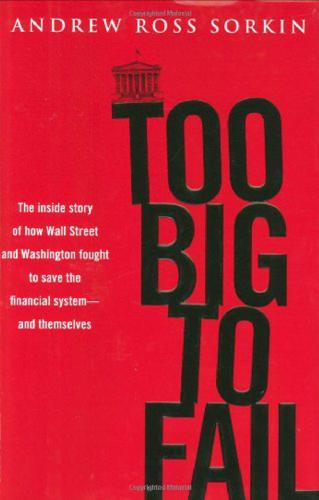
Too big to fail: the inside story of how Wall Street and Washington fought to save the financial system from crisis--and themselves
by
Andrew Ross Sorkin
Published 15 Oct 2009
When it worked, this strategy worked spectacularly well, validating the industry’s complex models and generating record earnings. When it failed, however, the result was catastrophic. The Wall Street juggernaut that emerged from the collapse of the dot-com bubble and the post-9/11 downturn was in large part the product of cheap money. The savings glut in Asia, combined with unusually low U.S. interest rates under former Federal Reserve chairman Alan Greenspan (which had been intended to stimulate growth following the 2001 recession), began to flood the world with money. The crowning example of liquidity run amok was the subprime mortgage market.

The Meritocracy Trap: How America's Foundational Myth Feeds Inequality, Dismantles the Middle Class, and Devours the Elite
by
Daniel Markovits
Published 14 Sep 2019
See Benedict Carey, “Life in the Red,” New York Times, January 14, 2013, accessed November 19, 2018, www.nytimes.com/2013/01/15/science/in-debt-and-digging-deeper-to-find-relief.html; and Sendhil Mullainathan and Eldar Shafir, Scarcity: Why Having Too Little Means So Much (London: Allen Lane, 2013). ideologically opposed to outright redistribution: See Rajan, Fault Lines. This phenomenon also had an international and macroeconomic dimension. On the global savings glut, see Martin Wolf, The Shifts and the Shocks: What We’ve Learned—and Have Still to Learn—from the Financial Crisis (London: Allen Lane, 2014). an almost actuarial logic: These observations attribute debt and financialization to deep structural—and in this sense necessary—features of social and economic arrangements.